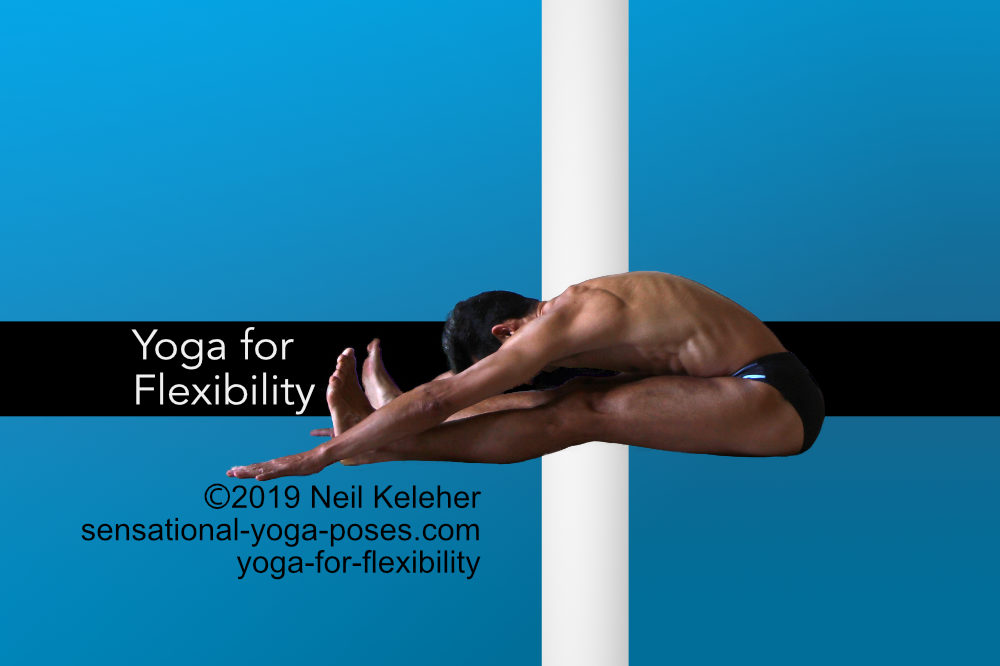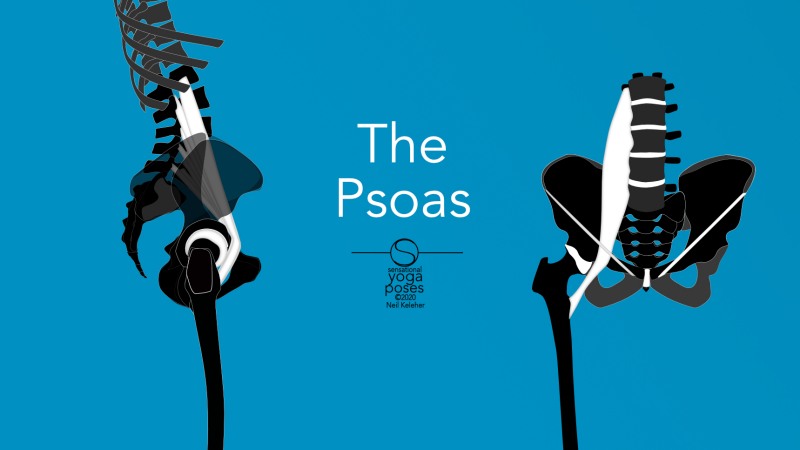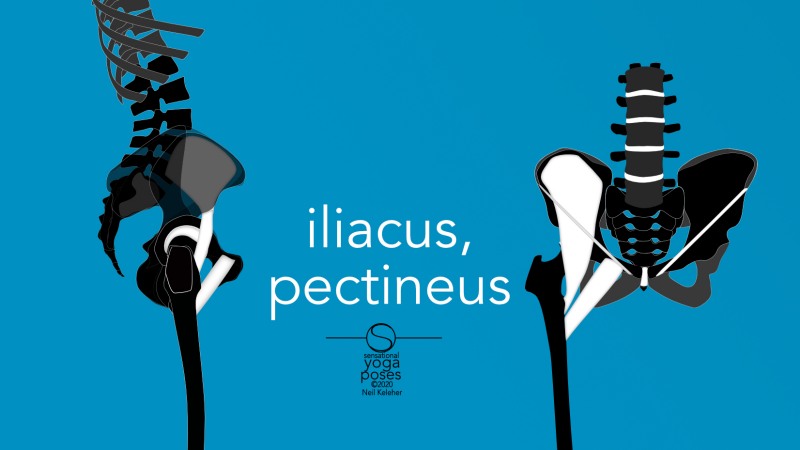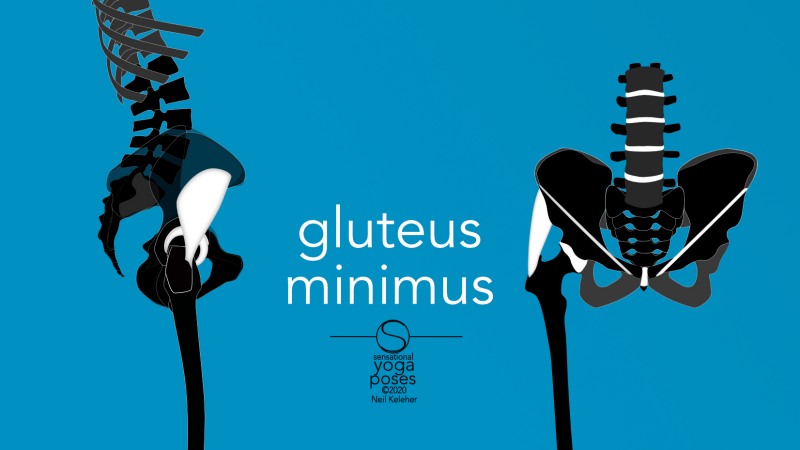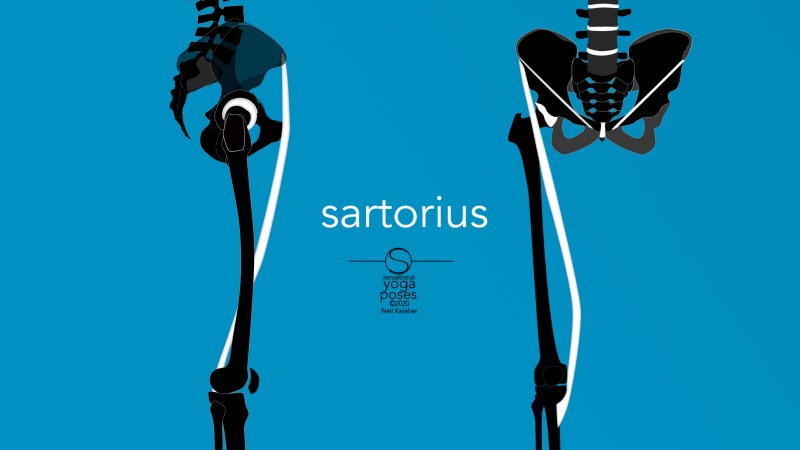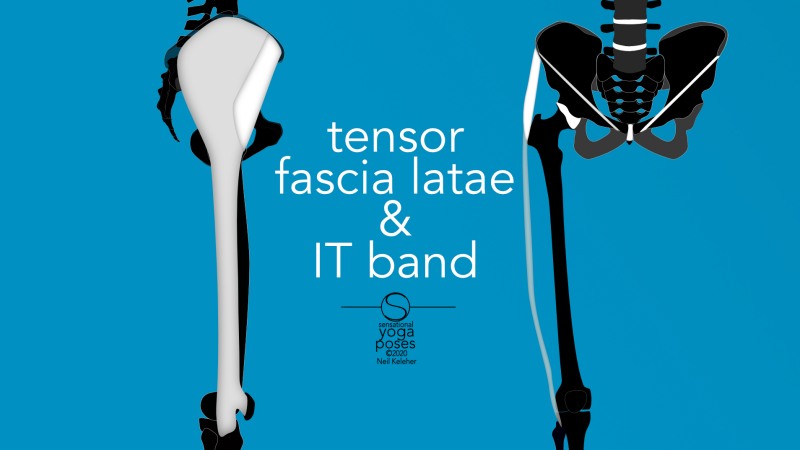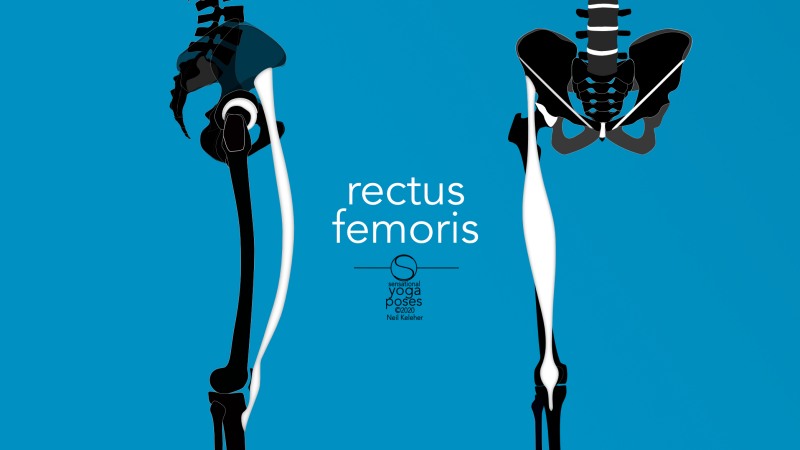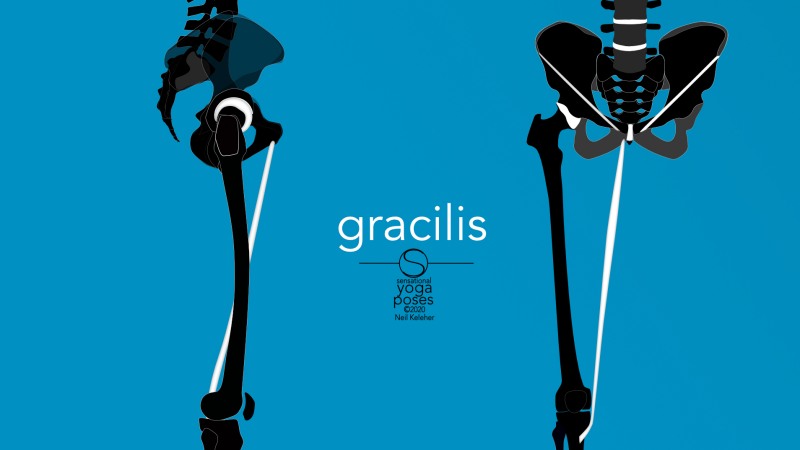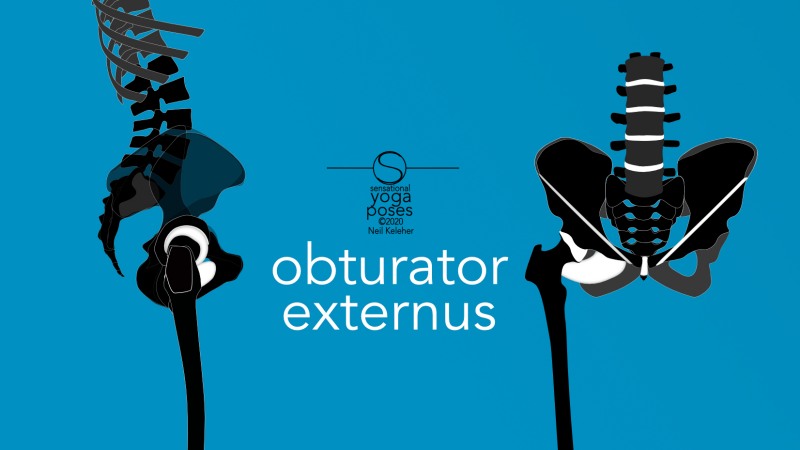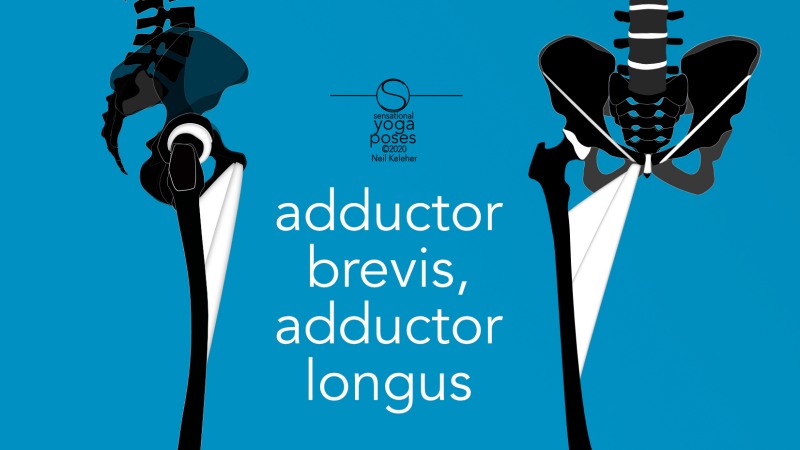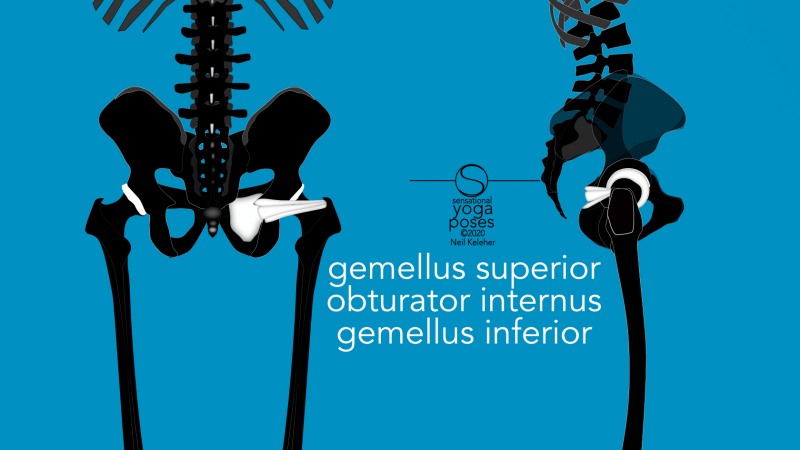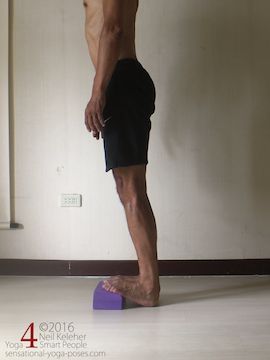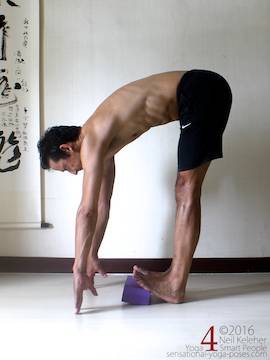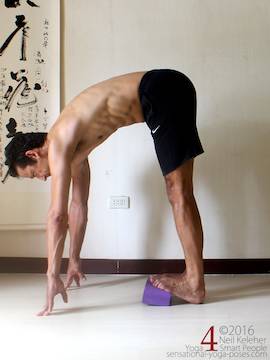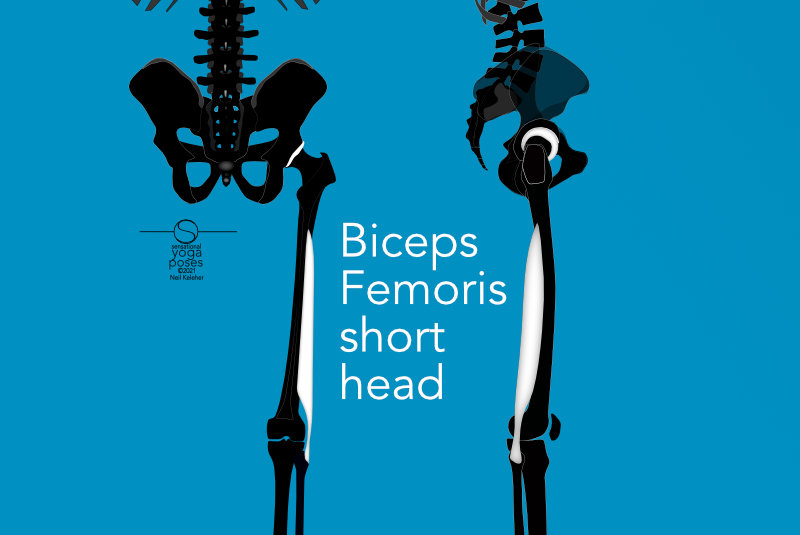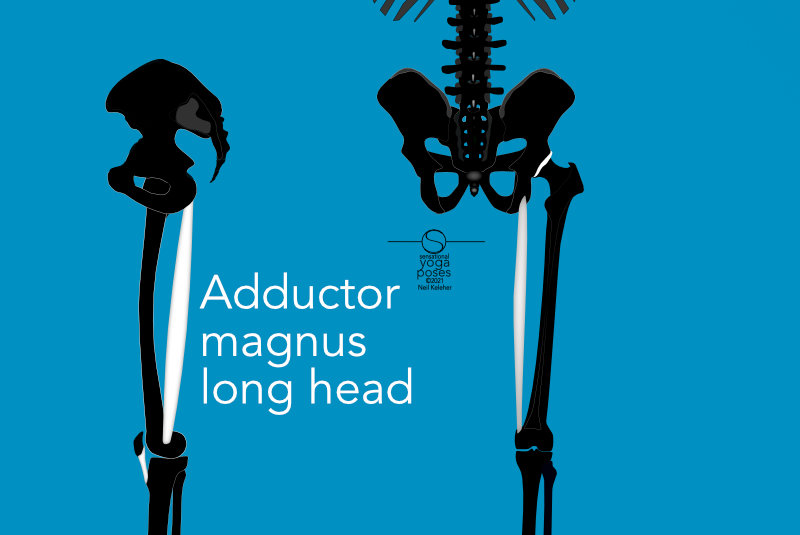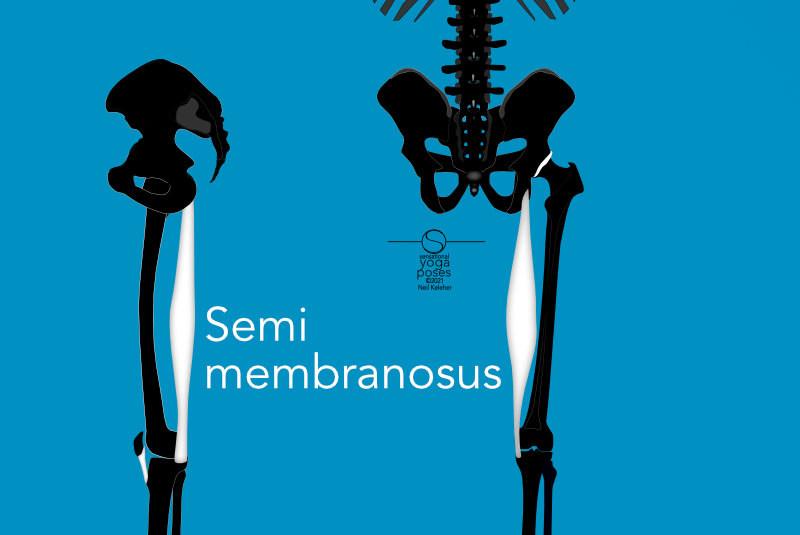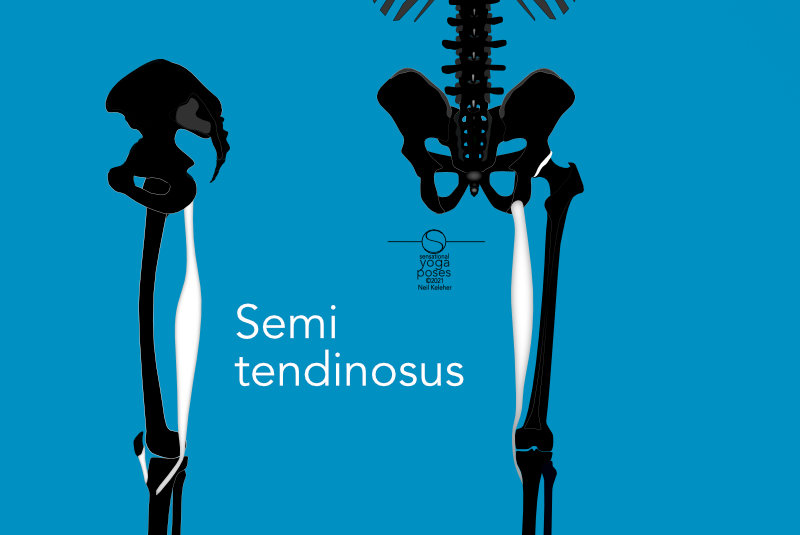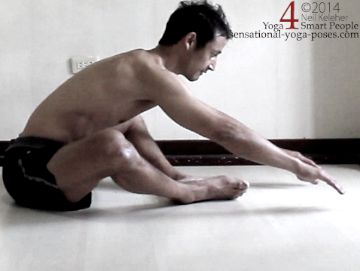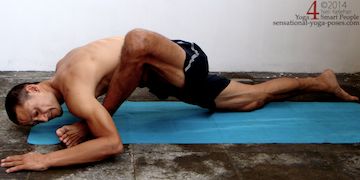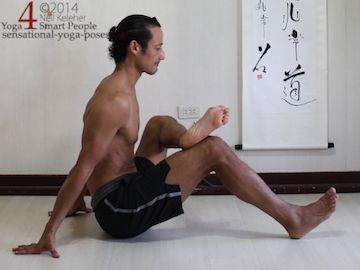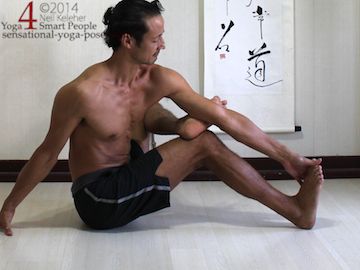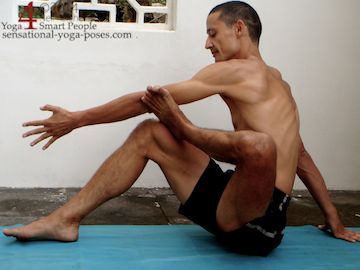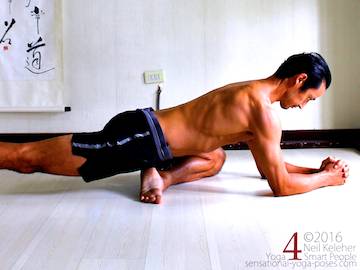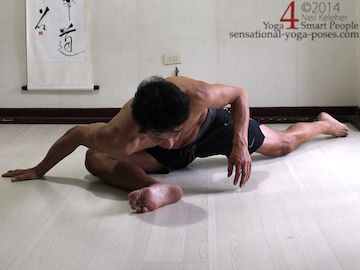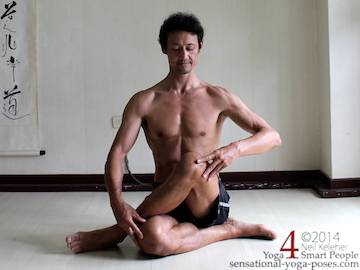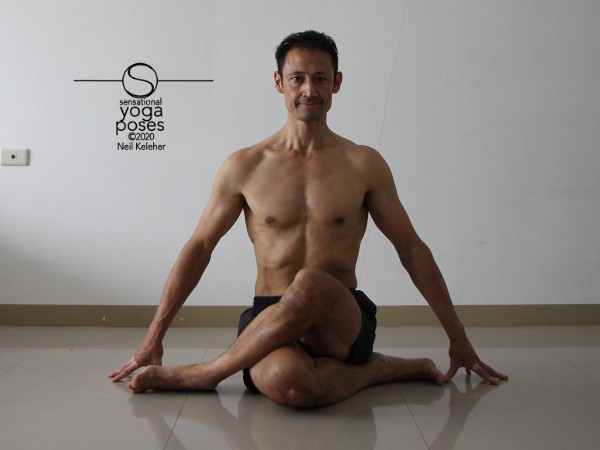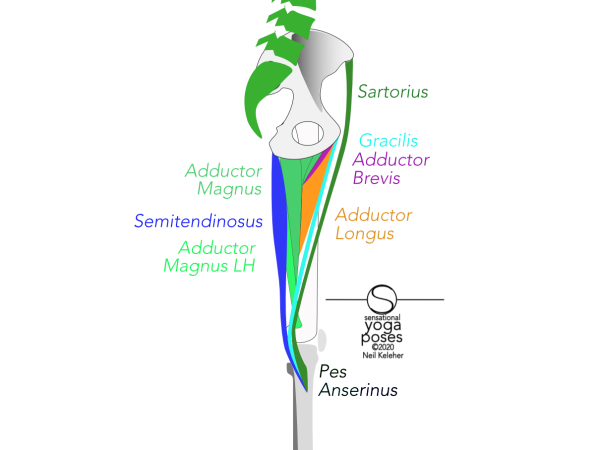Stretches by body part TOC
Flexibility is the ability to resist being stretched. The greater the range through which you can resist being stretched, the more flexible you are.
That may sound kind of strange but if you stretch an elastic band, does it not resist being stretched?
Floppiness isn't flexibility. Floppiness is the equivalent to being like a piece of string. You can bend it any which way, and it doesn't resist.
A broader definition of flexibility is that it is the ability to turn muscles on and off at will through a wide range of positions. The better this ability, and the greater the range through which you can apply it, the more flexible you are.
What this can mean is that if you have the ability to switch between being floppy and resisting, then that fits into this broader definition of flexibility.
Yet another way to think of flexibility, particularly if it involves being able to activate and relax muscles through a broader range of motion is that it is the ability to be strong across a broader range of motion. And so you could think of flexibility as the ability to apply strength at a muscles end range as well as in its mid ranges.
The hip flexors are muscles that work on the front of the hip joint to either "close" the hip joint (bending it forwards) or resist it being "opened" (bending backwards).
- There are single joint hip flexors (which you can find out more about in hip flexors) that work only on the hip.
- There are multijoint hip flexors, the long hip flexor muscles, that work on the hips and knees. (These include the sartorius, tensor fascia latae and rectus femoris.)
- Then there's the psoas.
Straight knee Hip flexor stretches tend to work more on the single joint hip flexors. That being said, they can have an effect on the multi joint hip flexors. And they can be affected by the multi-joint hip flexors. Either way, you may find it easier to start with straight knee hip flexor variations and then do their bent-knee counterparts.

Cat pose active hip flexor stretch.
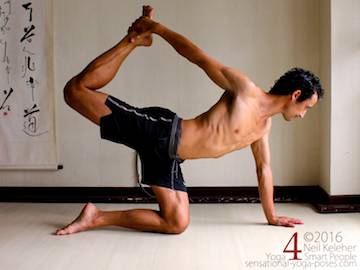
Single side bow pose on all fours.
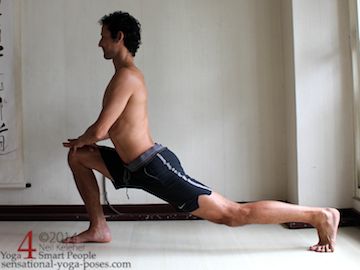
Upright lunge with knee straight.
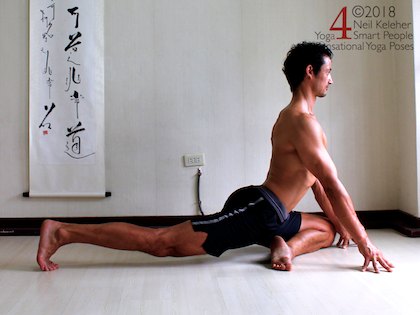
Upright pigeon pose hip flexor stretch.

Pigeon single side bow pose
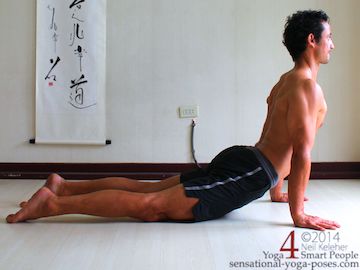
Upward facing dog
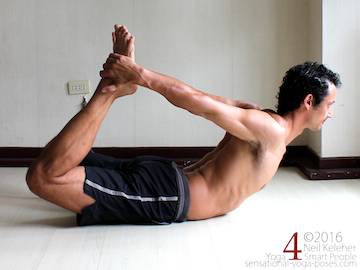
Bow poses
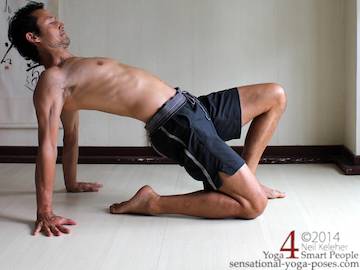
Half table top half camel hip flexor stretch
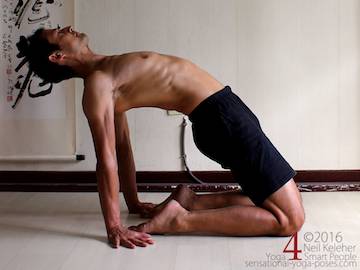
Camel pose hip flexor stretch
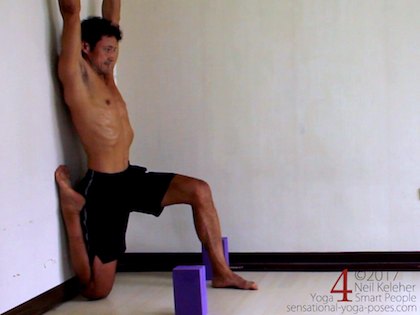
Quad and hip flexor stretch against a wall.
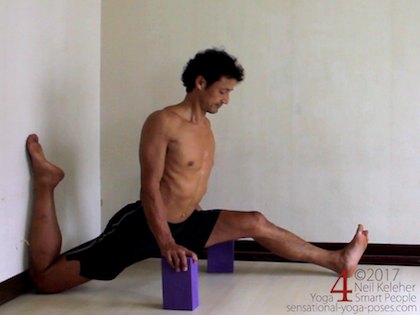
Splits with back shin against a wall.
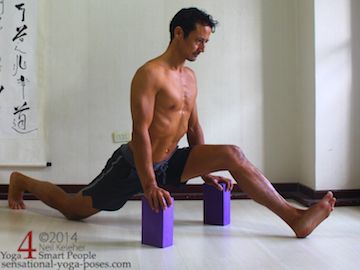
Upright Splits
Hip flexors stretches done with the knee bent at ninety degrees or more tend to work on the long hip flexors, and in particular the rectus femoris. These Bent knee hip flexor stretches can also be thought of as quadriceps stretches since the rectus femoris is part of the quadriceps group.
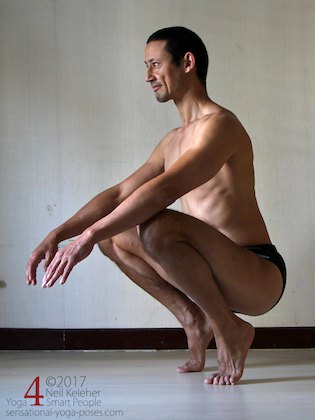
Squatting with heels lifted
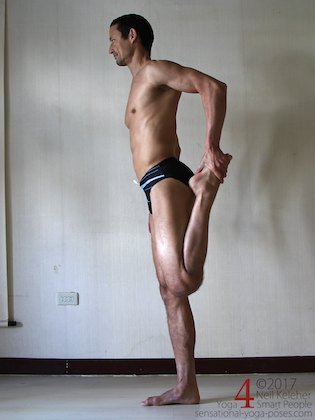
Standing bent knee hip flexor stretch
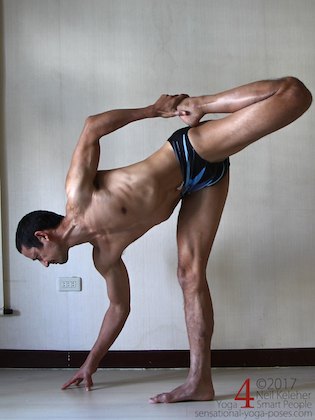
Forward Bending hip flexor stretch
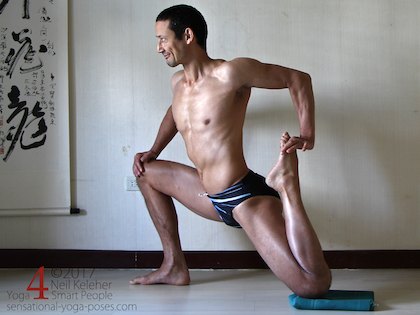
Lunging bent knee hip flexor stretch
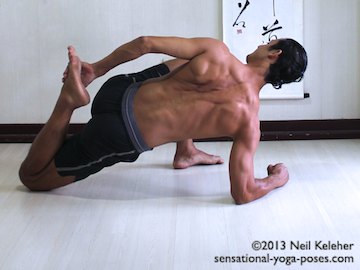
Twisting lunge
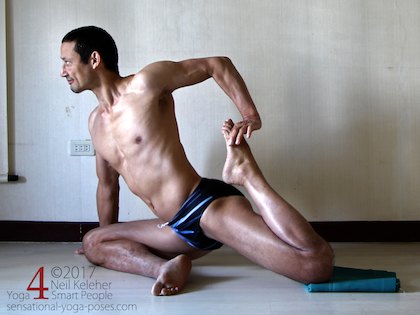
Pigeon pose bent knee hip flexor stretch
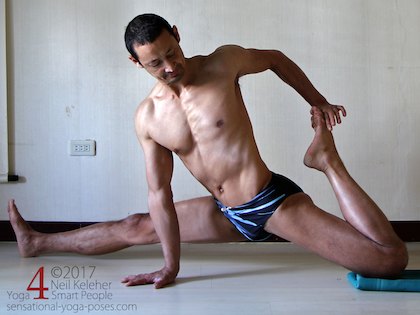
Front to back splits, bent knee hip flexor stretch
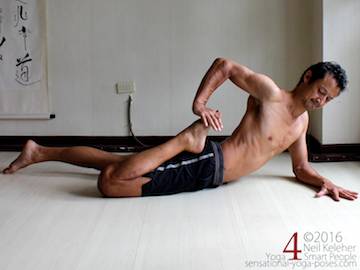
Frog pose bent knee hip flexor stretch
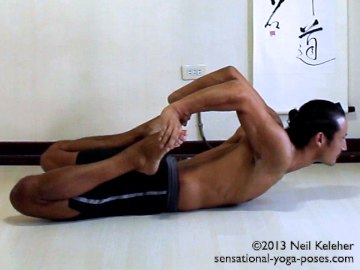
Frog pose dual leg bent knee hip flexor stretch
Front to back splits is both a hip flexor stretch and a hamstring stretch though with the torso upright the focus is more on stretching the hip flexors (and psoas) of the rear most leg.
For strengthening and stretching the hip flexors (and understanding why they might be tight in the first place and just as importantly, what you can do about it), read Hip flexor stretching and strengthening.
With the multi-joint hip flexors, particularly those that work on the knee and hip, it can be very helpful to understand knee rotation since two of these muscles help to control knee rotation relative to the hip.
For more on this read knee rotation and knee stability: controlling knee rotation
Speaking of hip flexors that work on the hip and knee, the sartorius is also a hip flexor, but it also bends the knee. Here's how you can stretch the sartorius using warrior 1: Sartorius stretch, warrior 1.
In terms of meridian stretching, the stomach and spleen meridians both run along the front of the hip and thigh. And so hip flexor stretches can also be used to stretch the stomach and spleen meridians. For more on that read Meridian Stretches 3.
As their name implies, the quadriceps is a set of four muscles. Three of the muscles, the vastus muscles, form the bulk of muscle at the front of the thigh. These work only on the knee joint. Meanwhile, the rectus femoris works on both the knee and the hip and is one of the aforementioned long hip flexor muscles.
Improving quadriceps flexibility (or simply, stretching the quads) generally involves closing the back of the knee joint.
One of the simplest ways to stretch the quadriceps is to kneel. (From there you can deepen the quadriceps stretch by leaning back.) If you have difficulty kneeling you may find it helpful to work on these ankle stretches. These can also be helpful for if you have difficulty kneeling with toes tucked under.
For more on kneeling to stretch the quads, check out this set of kneeling quadriceps stretches kneeling quadriceps stretch.
A slight variation on kneeling is the virasana or hero foot position. For more on that (and using it to stretch the quads) read: virasana.
Also check out these various kneeling yoga poses.
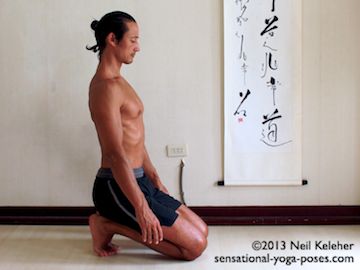
Kneeling w/ toes tucked
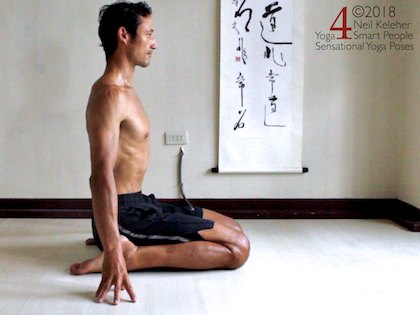
Hero pose
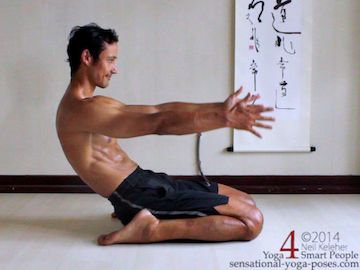
Bent back hero pose
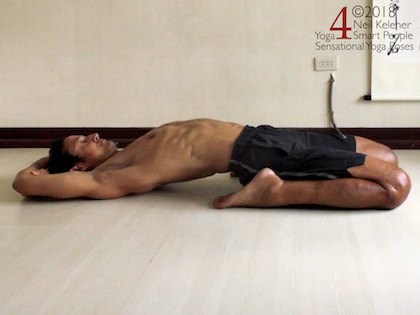
Reclining hero pose
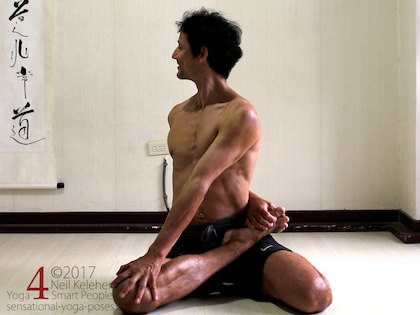
Bharad-vajasana
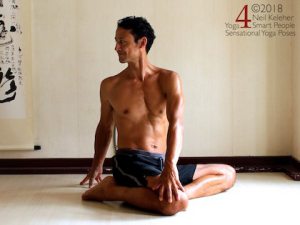
Mod. bharad-vajasana
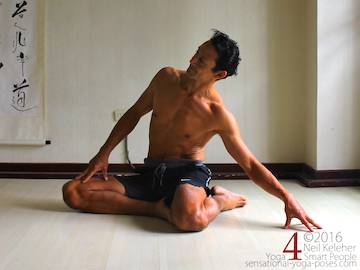
Options
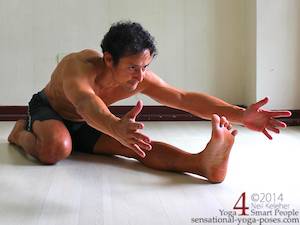
Half hero forward bend
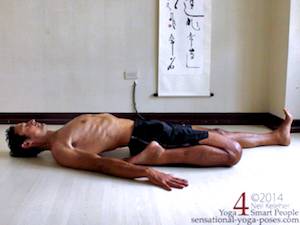
Reclining half hero
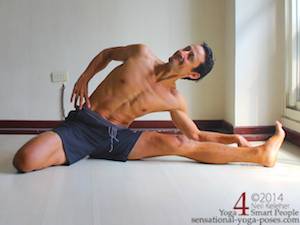
Half hero side bend
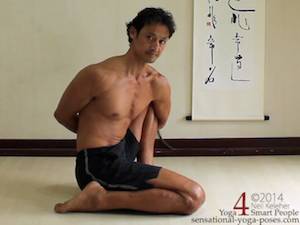
Marichyasana E
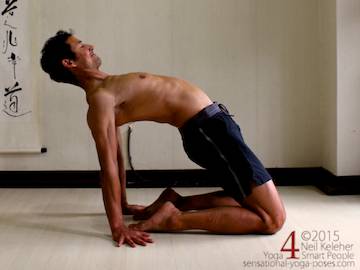
Camel pose
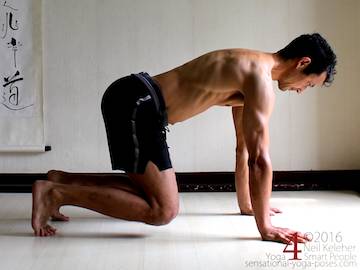
Dog pose (lifted knee cat pose)
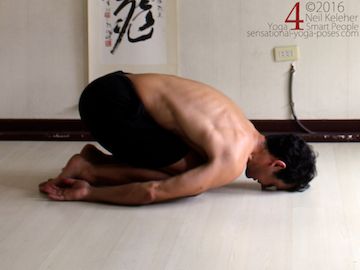
Child's pose
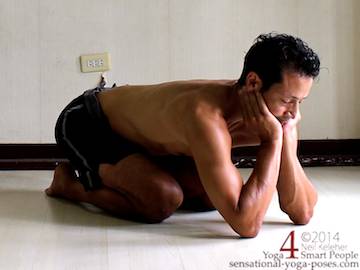
Child's pose variant
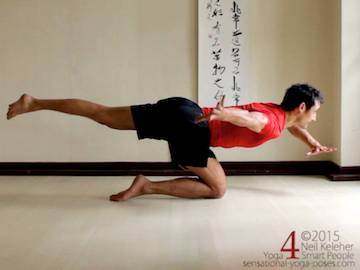
Shin balance
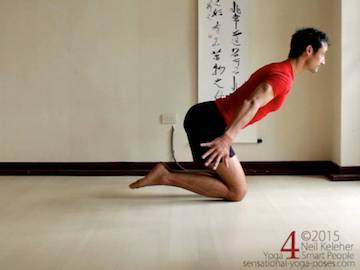
Knee balance
Another potential way to stretch the quads, at least the vastus portion, the portion that works solely on the knee, is with deep squats. Read more about deep squats.
When working to stretch your quads it can help to anchor the quadriceps from above or below. For more on how to both anchor the quads and stretch them, read sensational quad stretches.
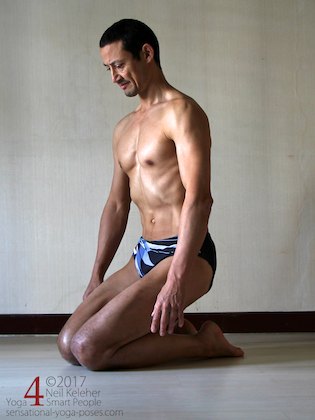
Quads activated to lift the hips
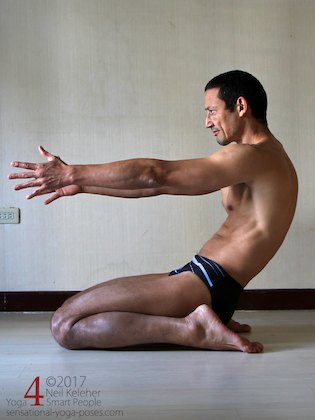
Bent back hero
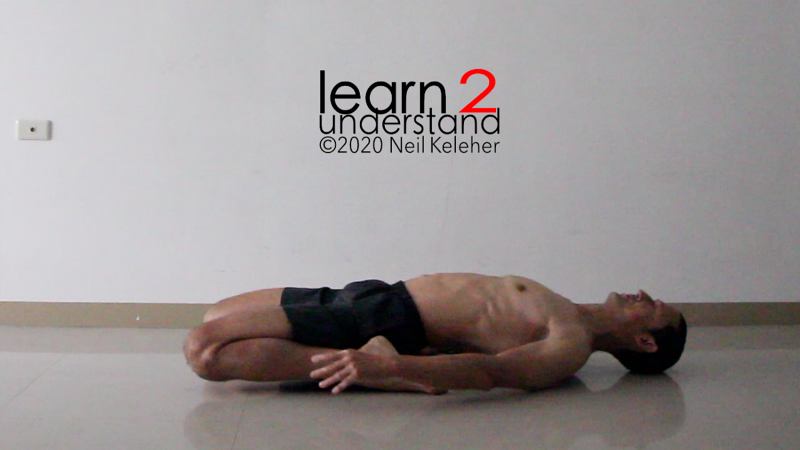
supta virasana or reclining hero
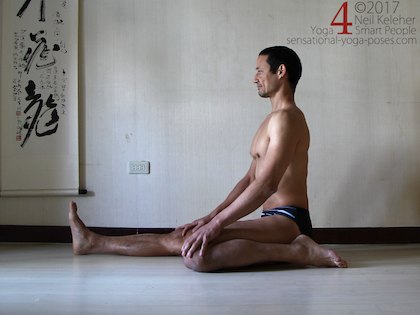
half hero pose with spine long
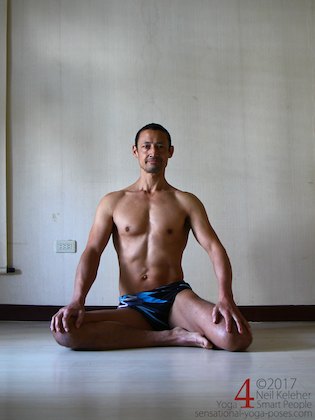
half hero quad stretch variation
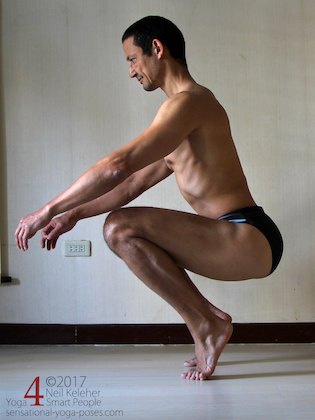
lowering into a squat with heels lifted

standing quad stretch
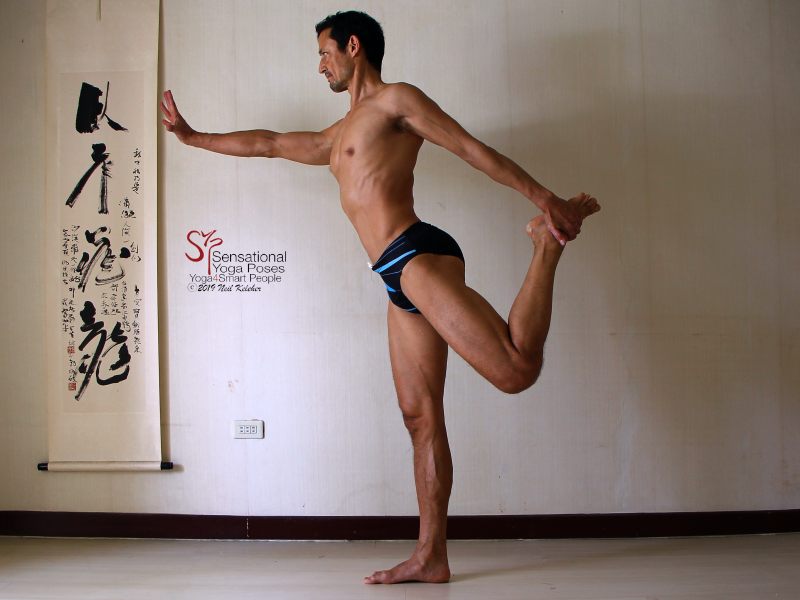
standing quad stretch and hip flexor stretch

lunging quadricep stretch
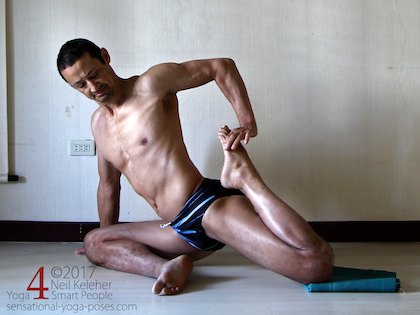
pigeon quad stretch variation

Front splits quad stretch variation

frog pose single leg quad stretch
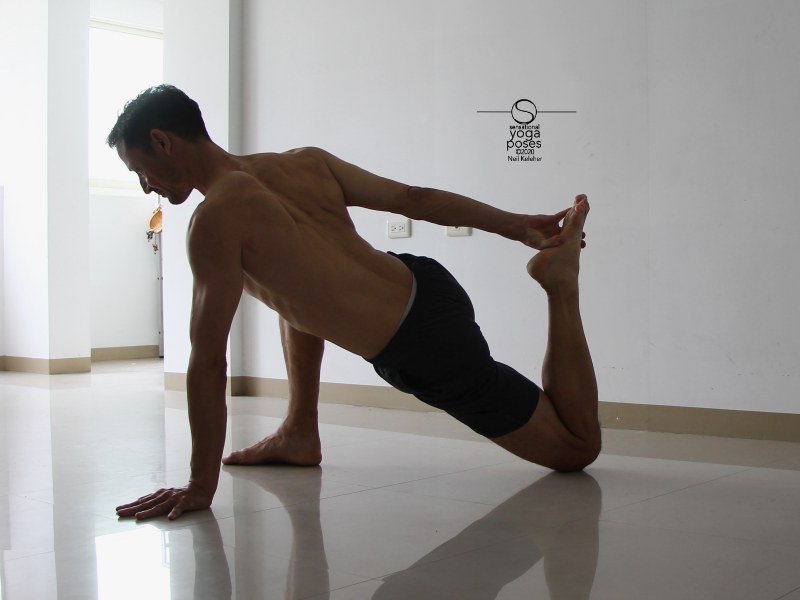
Quad and hip flexor stretch
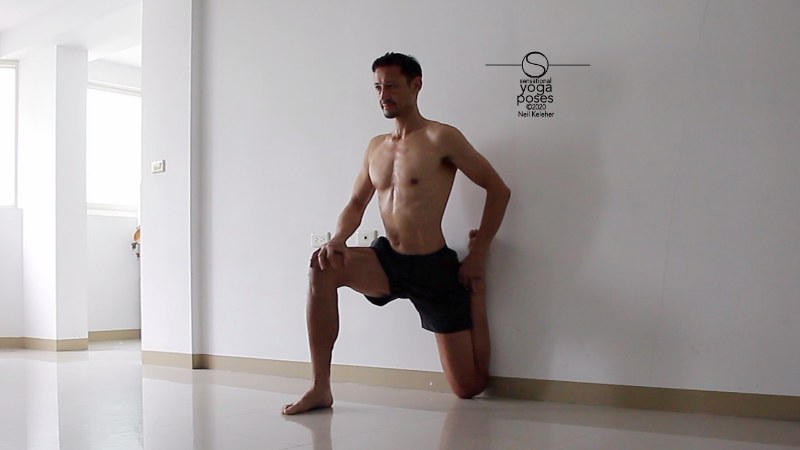
Quad stretch using a wall
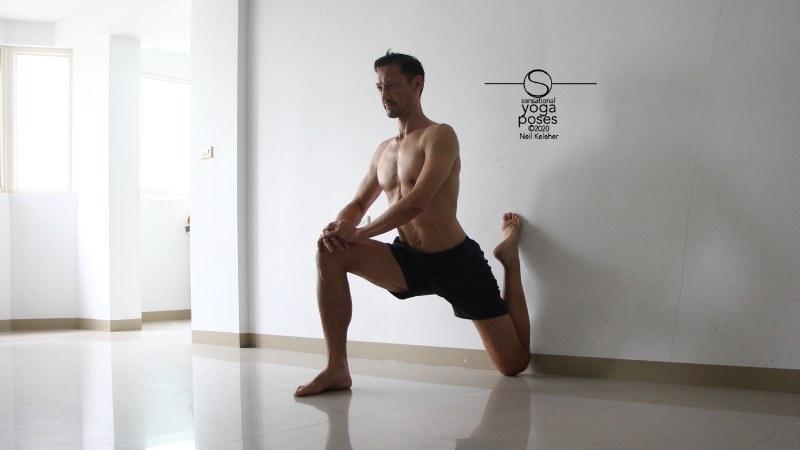
Quad stretch using a wall
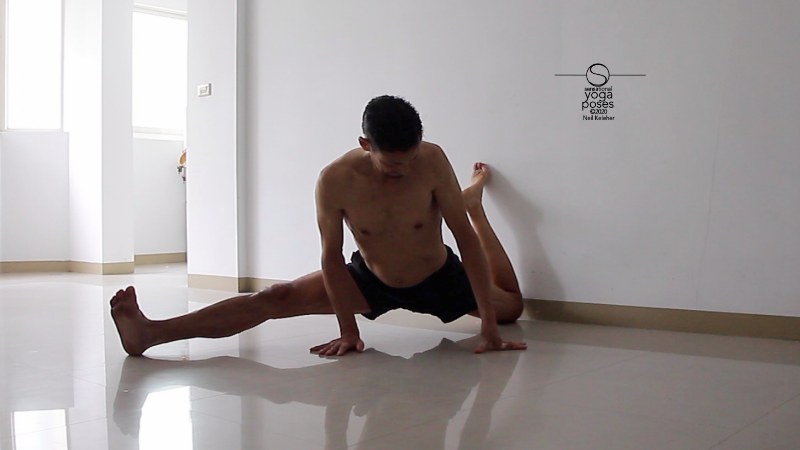
Front splits quad stretch using wall
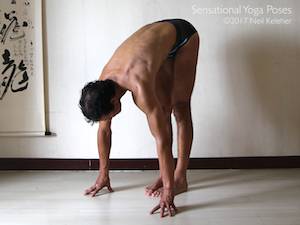
quad stretch counter pose
Because the quads work on the knee, it can help to understand that the knee has some ability to rotate, and the quads, particularly vastus medialis and vastus lateralis, can help to control this rotation. For more on knee rotation, so that you can have a better idea of how to stabilize your knee when stretching the quads, you may find these articles helpful:
When you stretch the toes you are generally stretching muscles that cross the ankle and that attach from the toes to the lower leg bones (the tibia and fibula). If you actively stretch these muscles (i.e. activate and strengthen them in a lengthened or shortened position) you practice stabilizing the feet and ankles. You may find that activating your toes while you stretch them can help improve ankle flexibility and control. It may also, have a positive affect on your knees.
Find out about stretching them in toe and ankle stretches.
You may be surprised to find that the calves affect the hamstrings and vice versa.
What is really interesting is how these two sets of muscles affect each other in straight leg positions. Often times the stretch you feel in a forward bend (or the discomfort) isn't so much the hamstrings but the calves.
The calf stretches article includes both passive calf stretches (like the ones shown above, and active calf stretches. Be prepared for some discomfort!
If you have difficulty with hamstring stretching yoga poses, you may find it helpful to stretch the back of the hips by doing bent knee hip extensor stretches first.

Marichyasana E
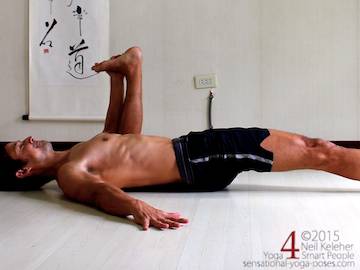
Happy baby
Glute stretches like low lunge,modified marichyasana e and Happy Baby Hip Stretch) can be used to increase flexibility at the back of the hip when the knee is bent. This can mean muscles like the adductor magnus long head are affected (since it can extend the hip), as well as some fibers of the gluteus maximus.
The hamstrings are the muscles that run down the back of the thigh. In general they work on both the hip joint and the knee joint. One muscle that runs down the back of the thigh but only works on the knee jiont is the adductor magnus long head. One that works only on the back of the knee is the biceps femoris short head.
If you want to stretch your hamstrings in order to work towards splits, then these hamstring stretches can help. (You'll have to work on your hip flexors also!)
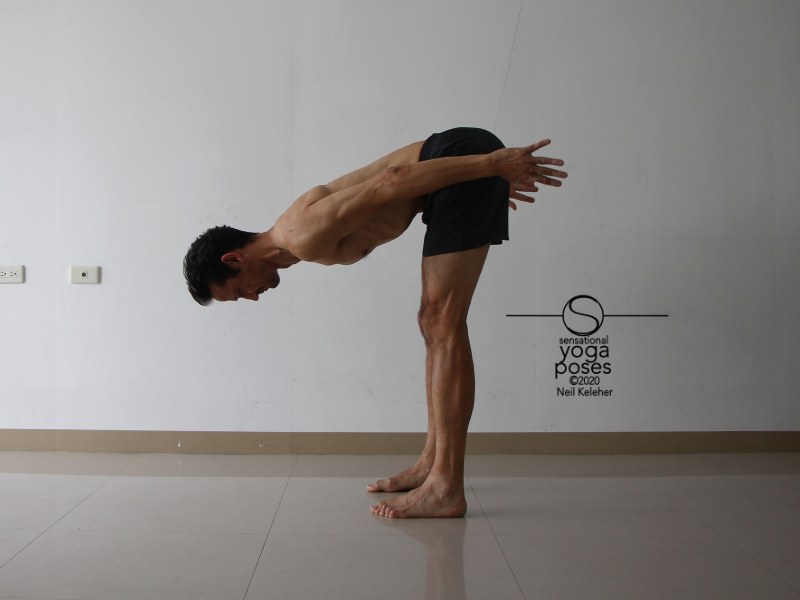
Standing forward bend
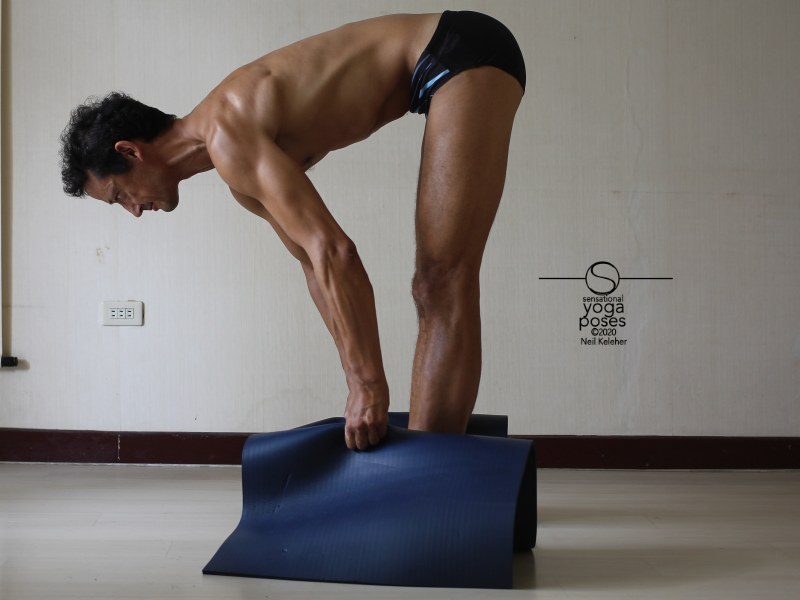
Standing f-bend using arms
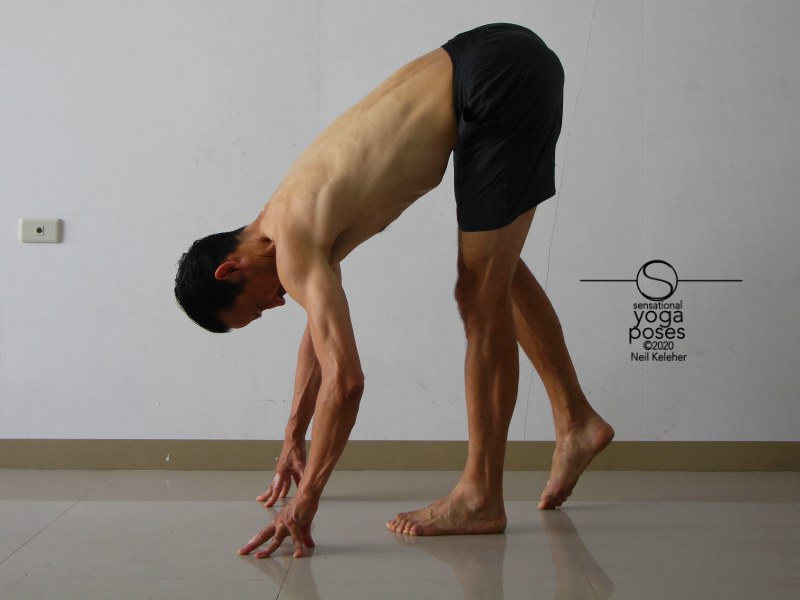
Standing f-bend on one leg
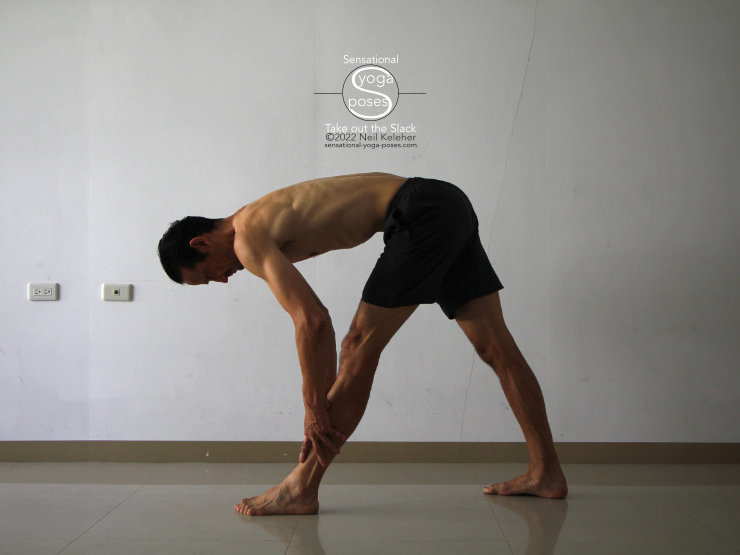
Pyramid pose hamstring stretch
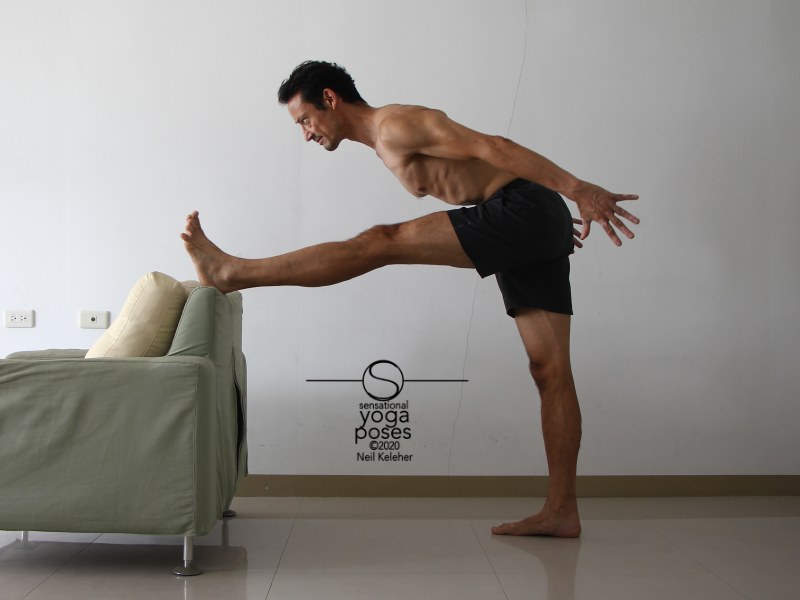
Leg supported
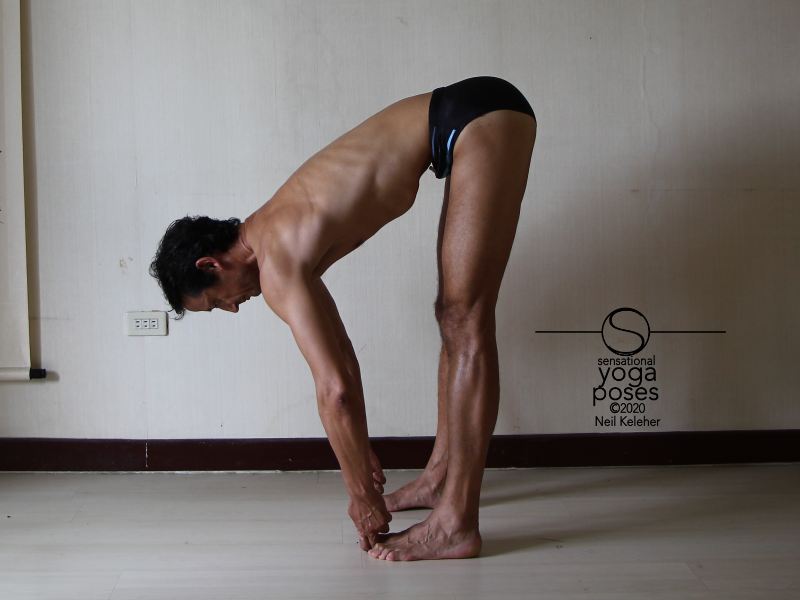
Spine long TA engaged
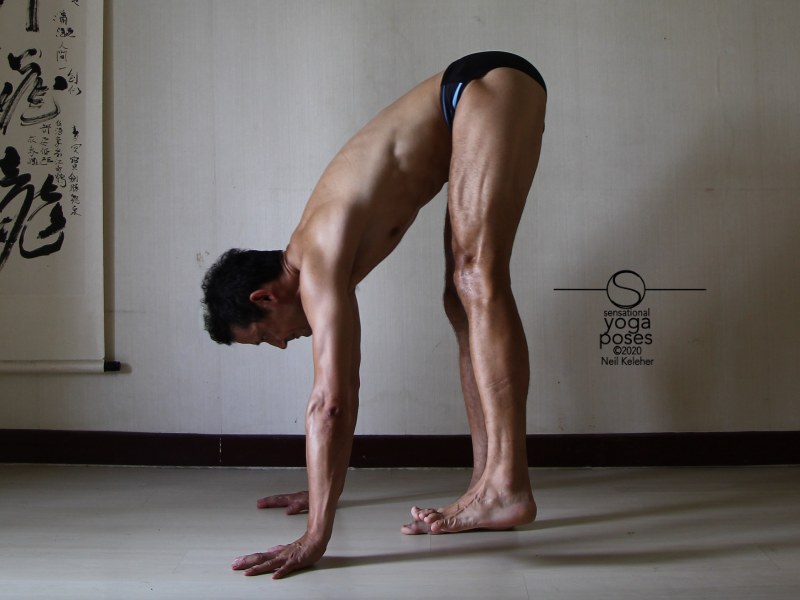
Pulling lifted leg fwd
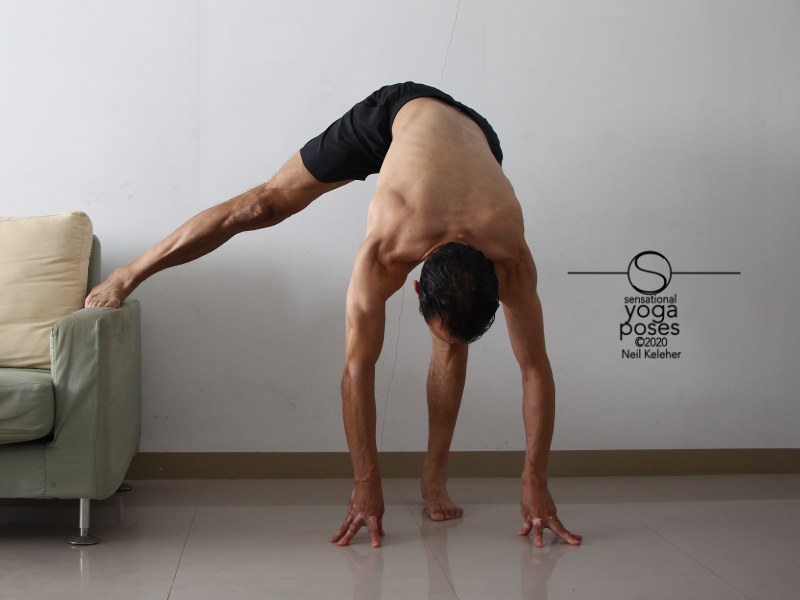
Bending down to standing leg
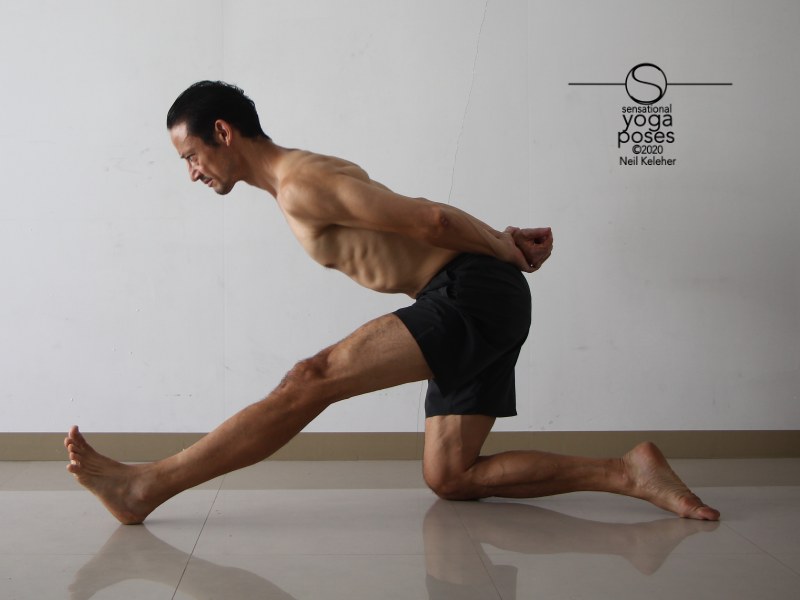
Semi-kneeling w/ hips lifted
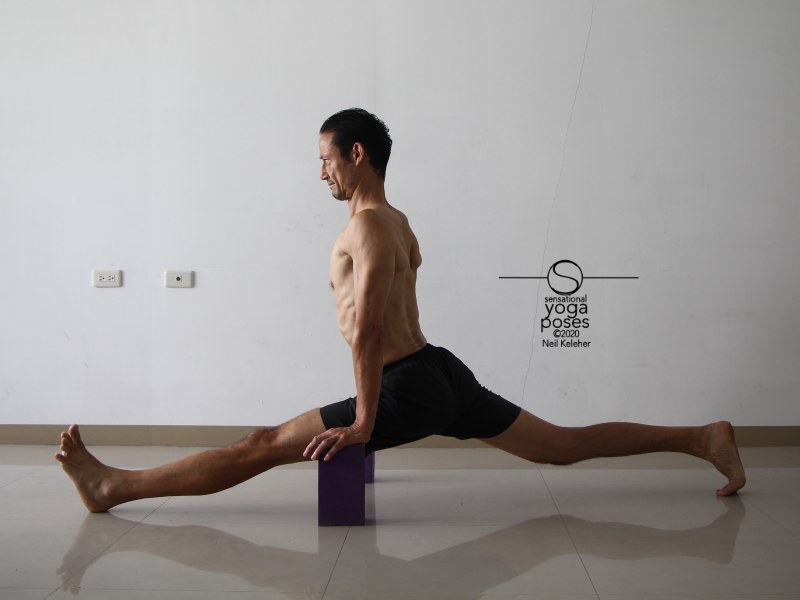
hamstring and hip flexor splits
For a set of yoga poses that can be used to stretch the hamstrings, also check out hamstring stretching yoga poses.

seated stretch with leg lifted using a belt.
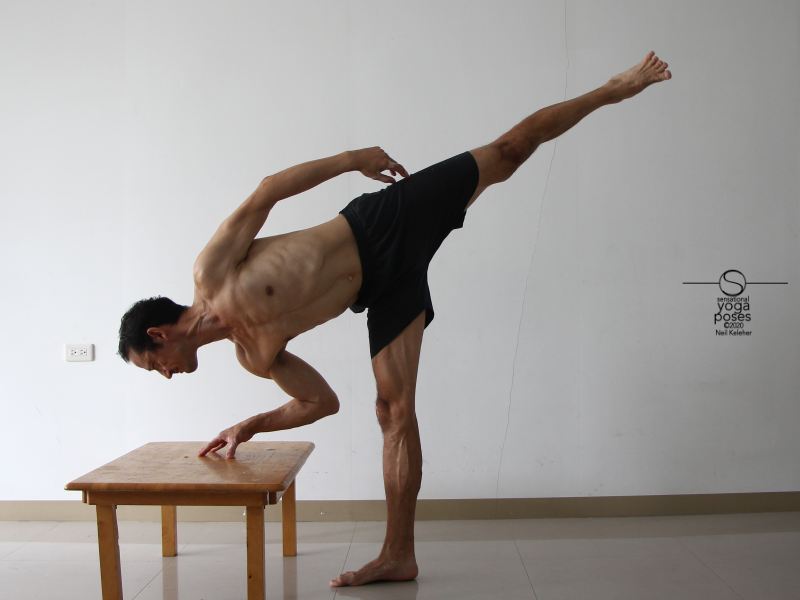
Half moon as a hamstring stretch.
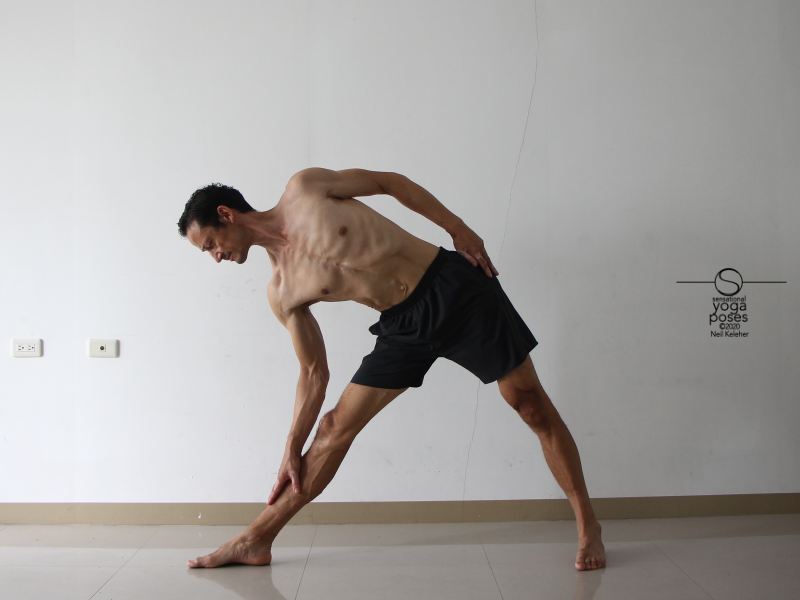
triangle yoga pose
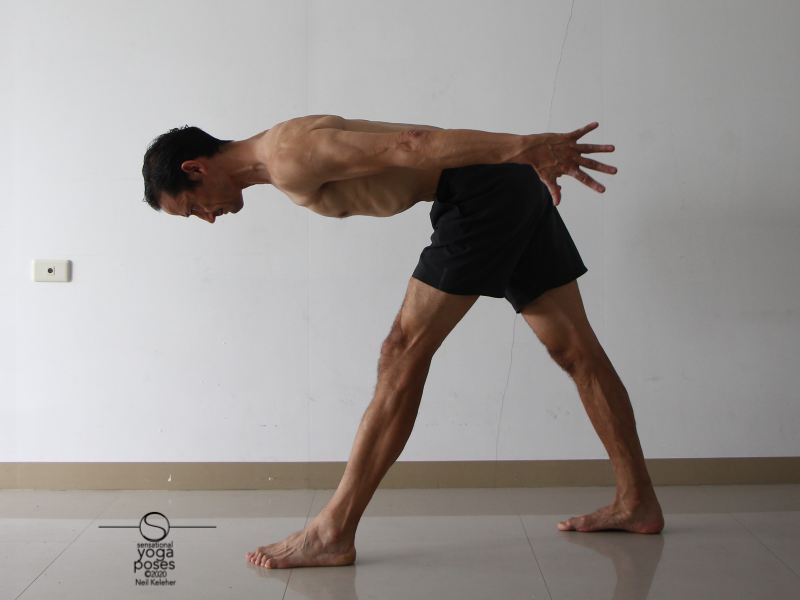
Pyramid pose
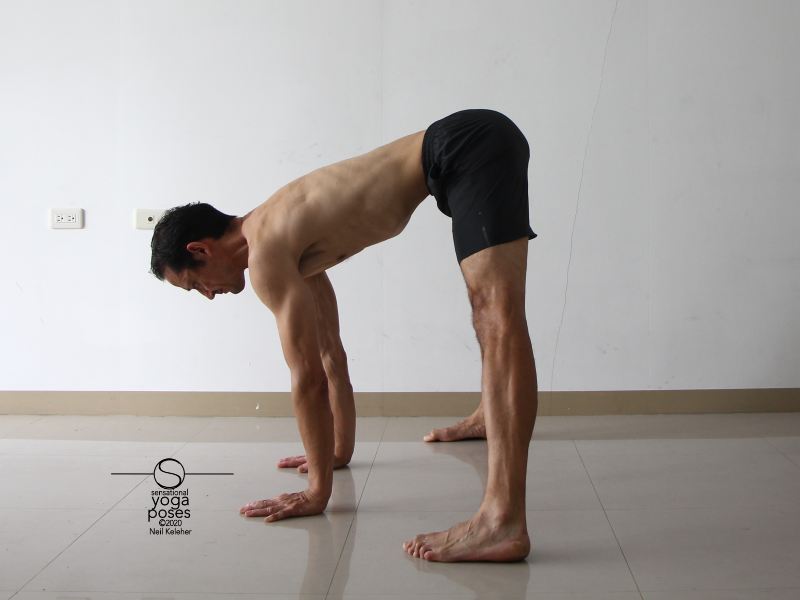
Standing wide leg front bend hands on floor.
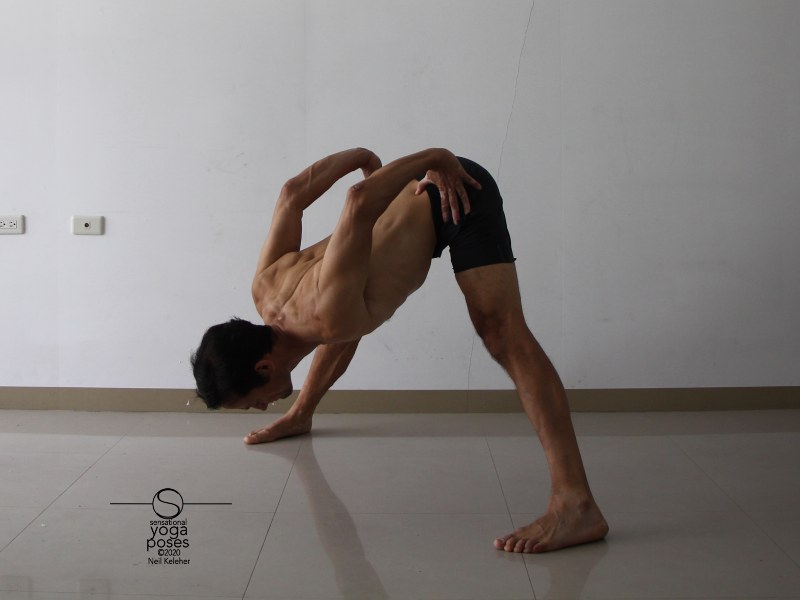
Standing wide leg front bend hands on hips.
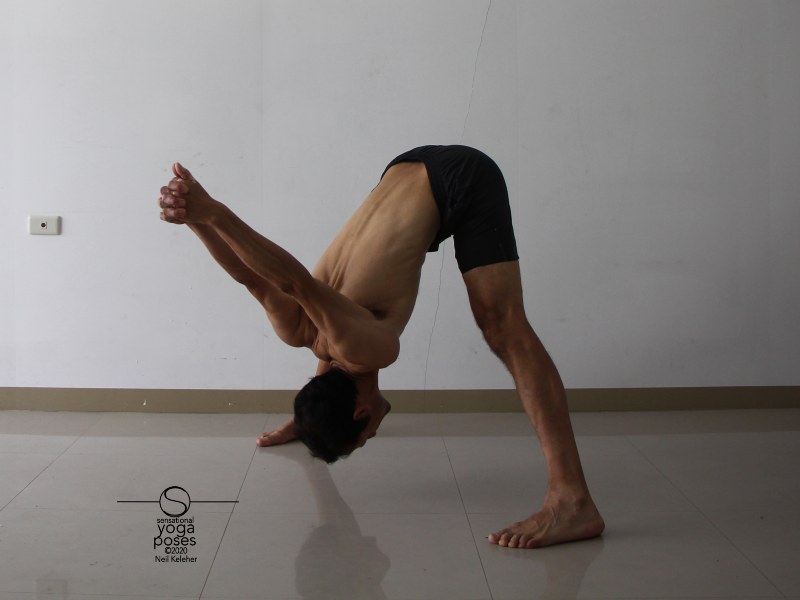
Standing wide leg front bend hands clasped
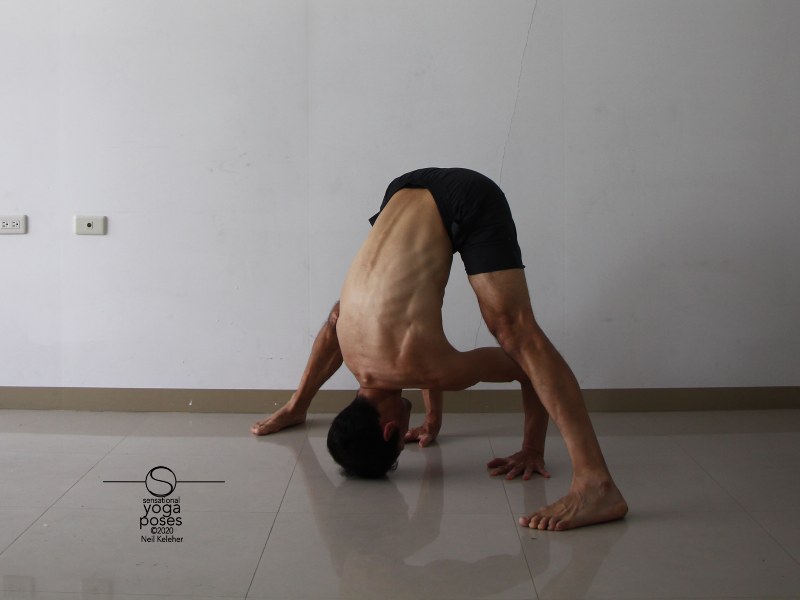
Standing wide leg front bend hands on floor.
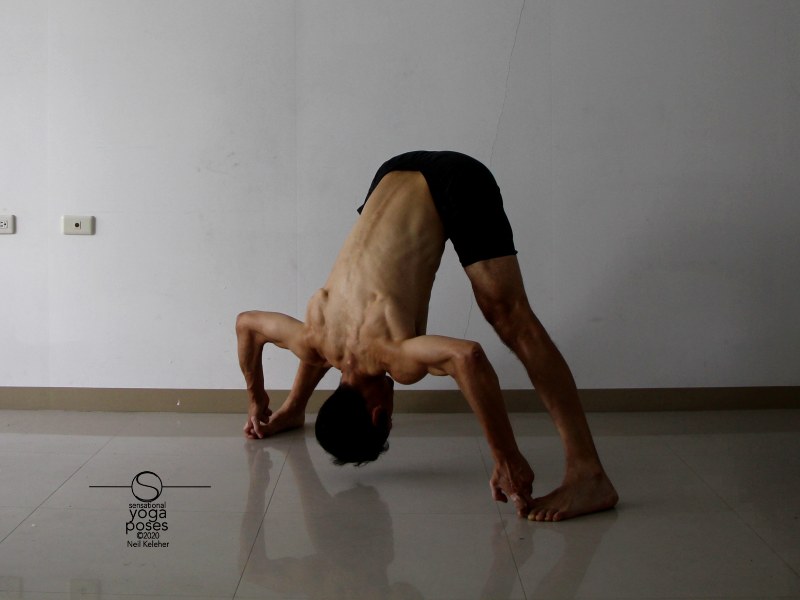
Wide leg front bend grabbing big toes
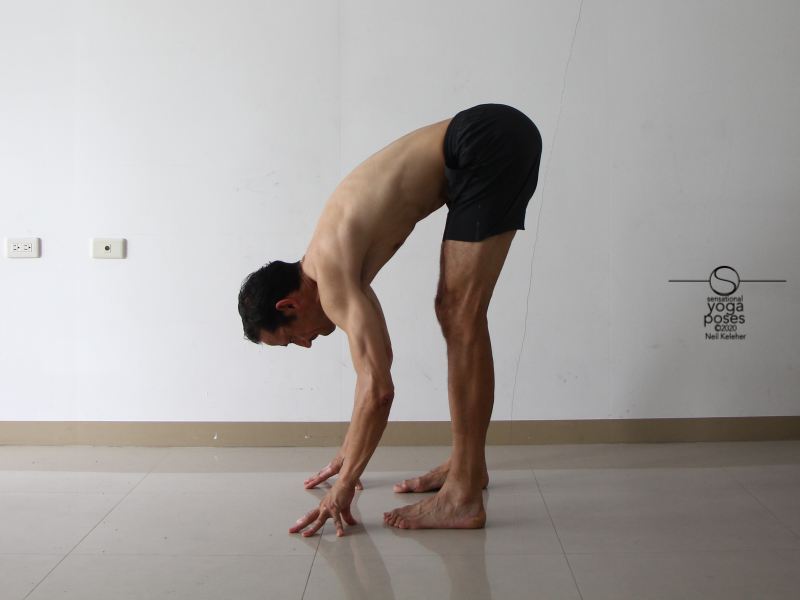
Standing front bend, hands on floor

hamstring stretch with leg supported
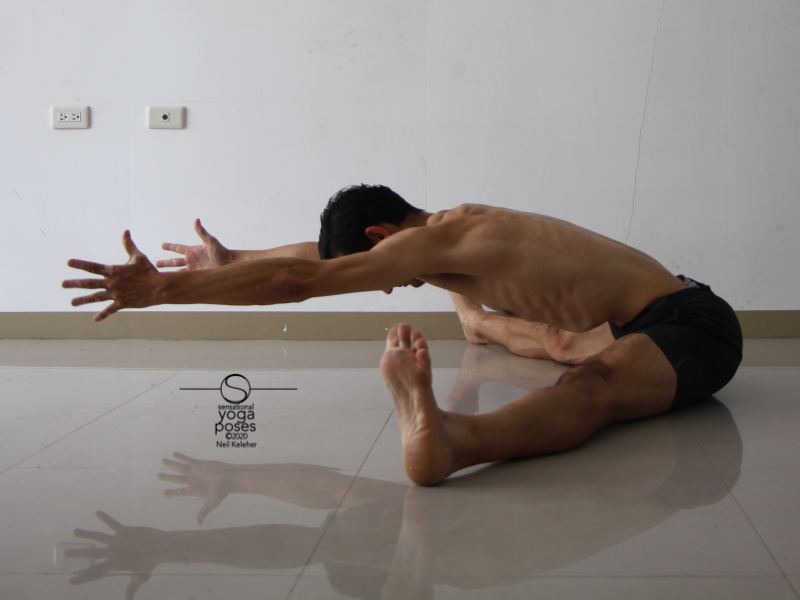
Seated wide leg front bend
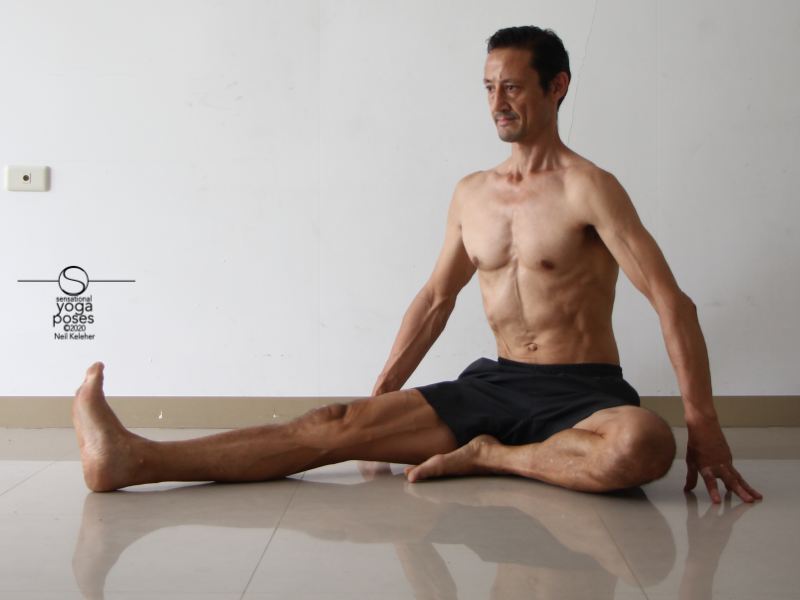
Janu sirsasana A foot position
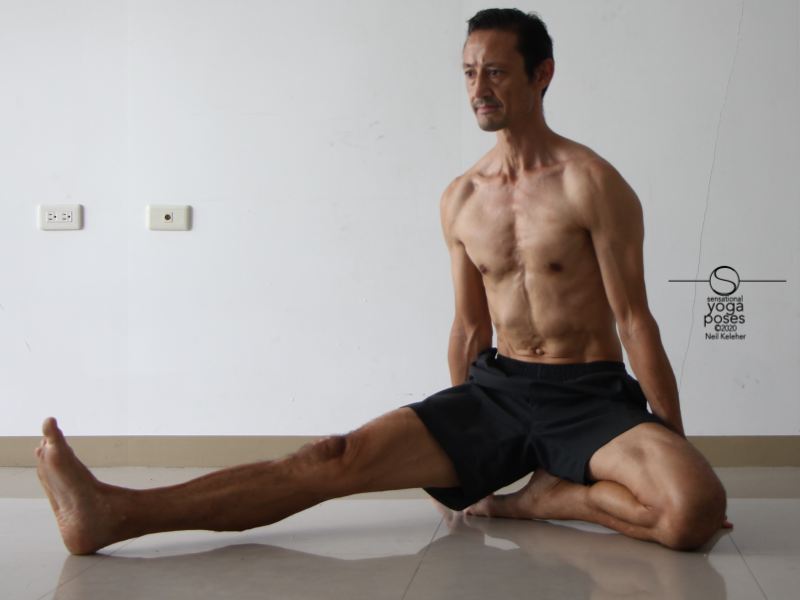
Janu sirsasana B foot position
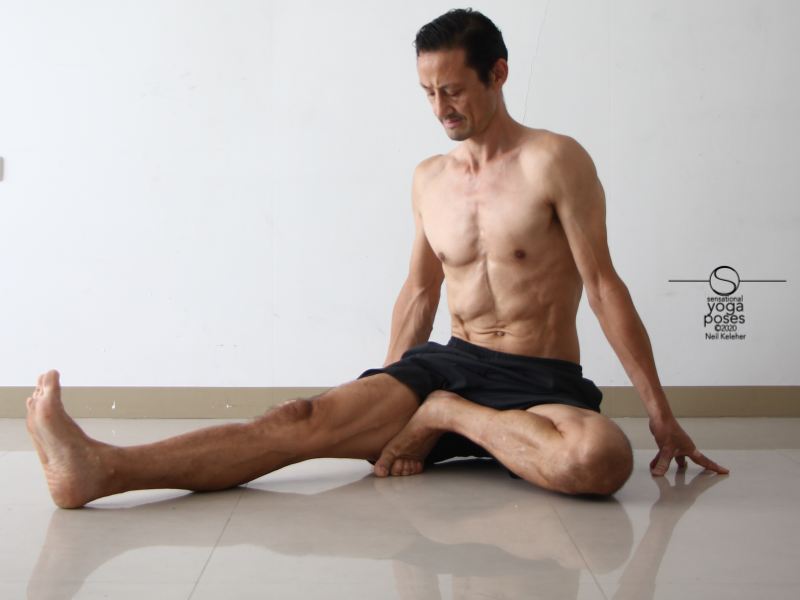
Janu sirsasana C foot position
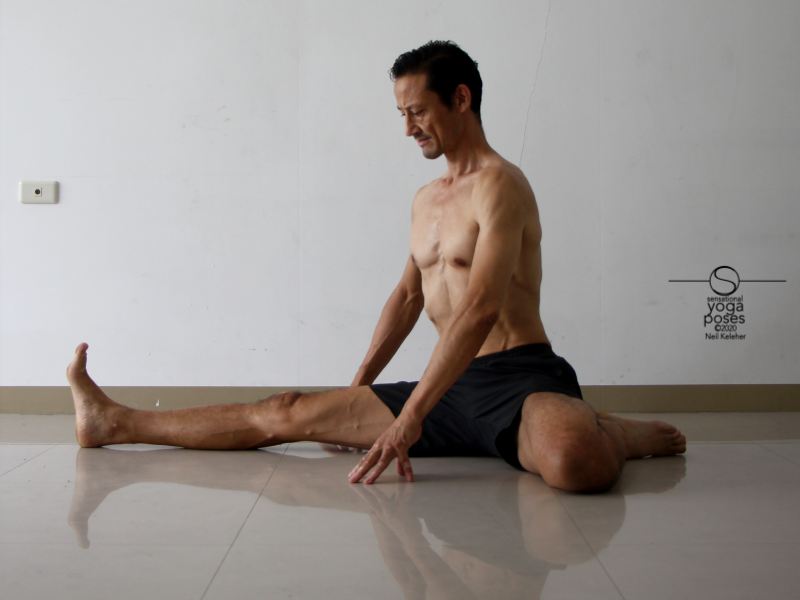
Hurdlers stretch with torso upright.
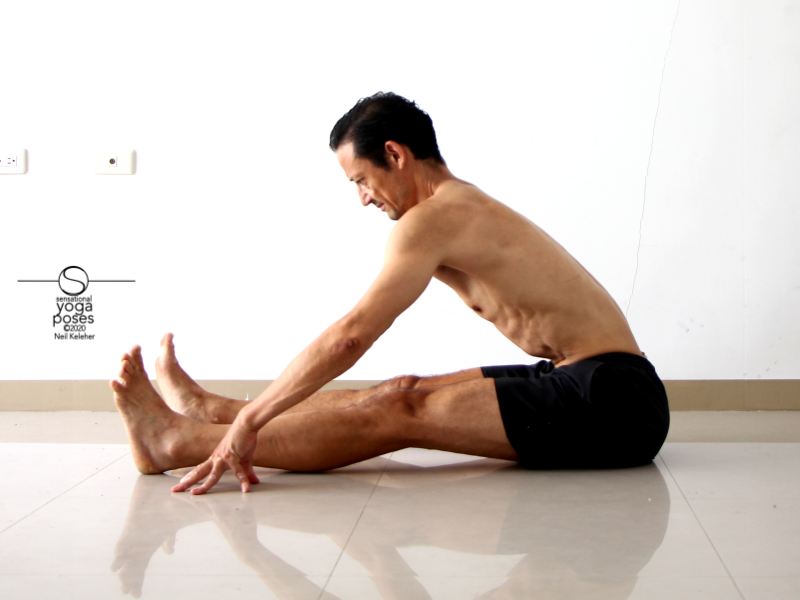
Seated forward bend
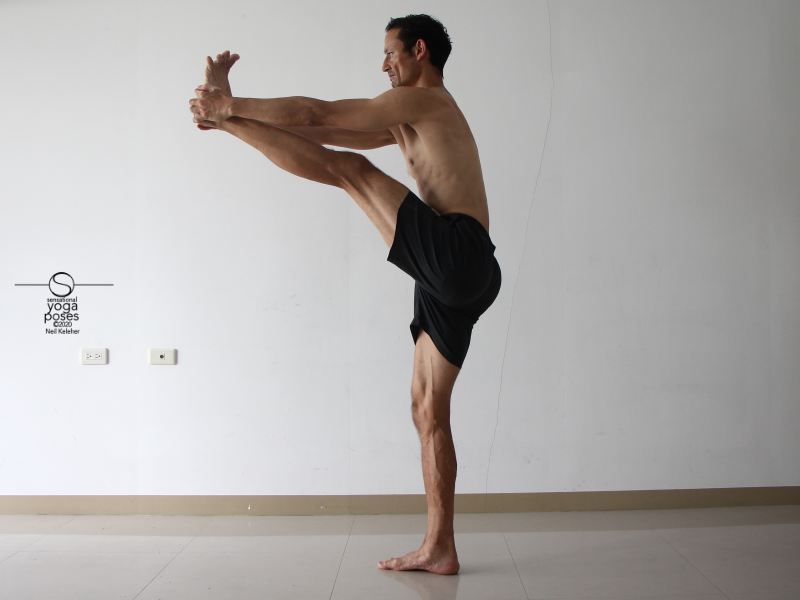
Lifted leg hamstring stretch
And for a simple seated hamstring stretch check out seated hamstring stretch.
For a set of simple (and relatively easy) postures for stretching your hamstrings, check out Simple postures for stretching your hamstrings.
For more on how the hamstrings and glutes work together in different yoga poses you may find the hamstring anatomy article useful.
The glutes in this case can mean the lateral glutes, gluteus minimus and medius though gluteus maximus may also be stretched. In general you could think of these glute stretches as stretches for the outside of the hip.
For more ways to stretch the glutes, try some of these pigeon pose variations.
One of my favorite glute stretches is pigeon pose glute stretch. I often use this version of pigeon as a prep for foot behind the head because the leg positions are quite similiar.
Another hip stretch, which is also a shoulder stretch, is armpit pose.
Note that these hip stretches can be fairly intense and afterwards you may find it helpful to either counter pose them or do poses that reactivate the hips, or both. For more on all of that read counter poses for hip openers.
While it may not be possible to stretch the actual Iliotibial band (also called the fascae latae), you can stretch some of the muscles that work on it (fibers of the gluteus maximus, tensor fascae latae and vastus lateralis) with shoelace pose (Iliotibial band stretch ).
The adductors are a set of muscles that run down the inner thighs. Muscles with the word "adductor" in their title work only on the hip while another muscle, the gracilis, which is commonly grouped with the adductors works on both the knee and the hip.
For a look at the inner thigh muscles and "adductors" together, check out Adductors and inner thigh muscles.
In terms of improving inner thigh flexibility, all of these muscles are important.
For a set of positions for stretching the inner thighs check out these Adductor stretches.
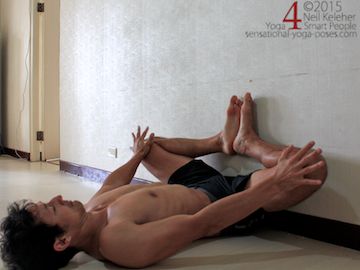
Supine bound angle using wall.
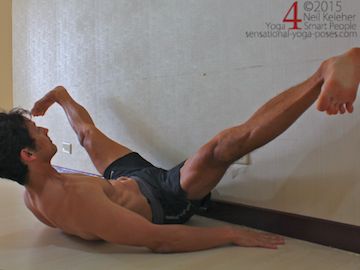
Supine wide leg stretch using a wall.
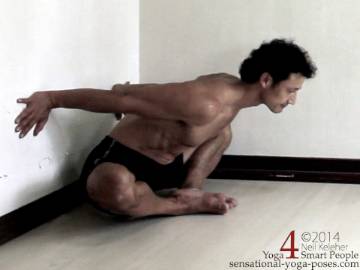
Bound angle with hands against a wall.
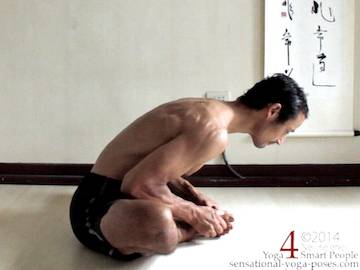
Bound angle with feet grabbed.
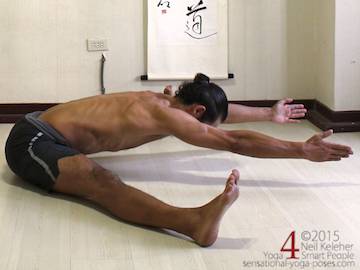
Seated wide leg forward fold.
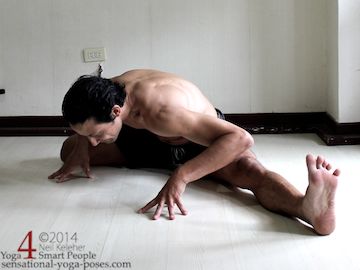
Hurdlers pose adductors stretch.

Prone big toe pose adductor stretch.
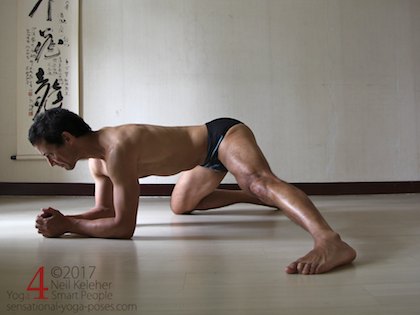
Half split adductor stretch
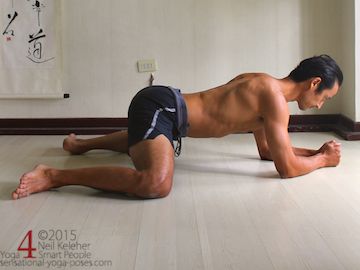
Frog pose adductor stretch.
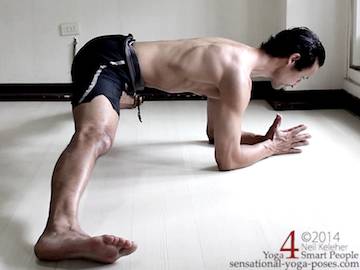
Side splits adductor stretch
If you are interested in working towards side splits, one way to work towards it is with Half side splits. One thing you might choose to consider when working on side splits is knee stability. You can read more about this in Knee Joint Integrity and Middle Splits and Stabilizing the Knee Joint in Middle Splits.
A useful reference for stretching the adductors (and for feeling and controlling the hips in general) is the hip crease.
You may find the action of opening the hip crease handy in bound angle pose. But don't forget to counter pose (or counter stretch) by closing the hip crease wide leg forward fold.
Read about both in opening the hip creases, bound angle pose.
Another way you can use the hip crease opening action is in seated straddle splits.
Even more on the hip crease
For even more on the hip crease, you can check out my Hip Control via the hip crease course. It includes four routines designed to help you learn to feel and control your hip crease, and hip joint in general, and improve hip flexibility. Access to this video course is also included in my "take out the slack" membership program.
The psoas is a hip flexor (and a lumbar stabilizer).
One way to stretch the psoas is with a Reclining Psoas Stretch. Part of what makes this stretch interesting is that it is based on the understanding that the psoas connects to the 12th set of ribs. You can also stretch the psoas with a Standing Psoas Stretch as well as these Standing psoas stretch variations. Other stretches include some Active Psoas Stretches.
One method for stretching the psoas includes learning to add "inner tension" to the lumbar spine. This is covered in psoas stretches. Another technique is to keep the abs engaged, in particular the obliques. This is covered in psoas stretches-1.
Lower back stretches include a variety of standing and seated yoga exercises for increasing the flexibility and control of the lower back muscles and hip muscles.
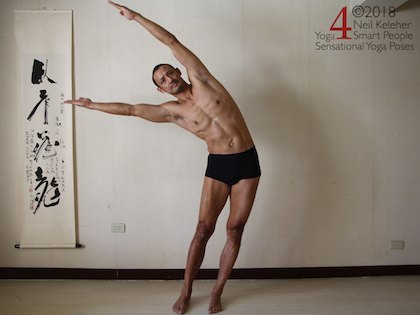
Standing side bend
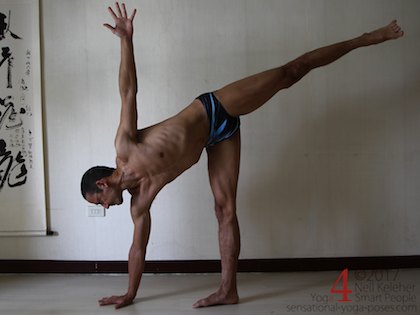
Half moon pose
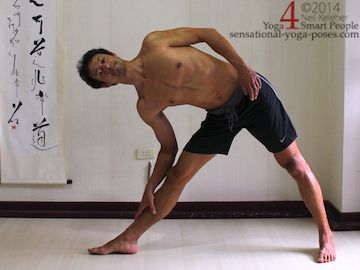
Triangle pose
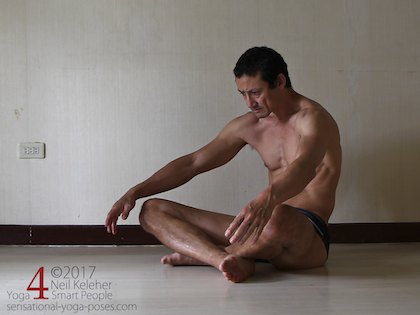
Seated slouch (can be done standing)
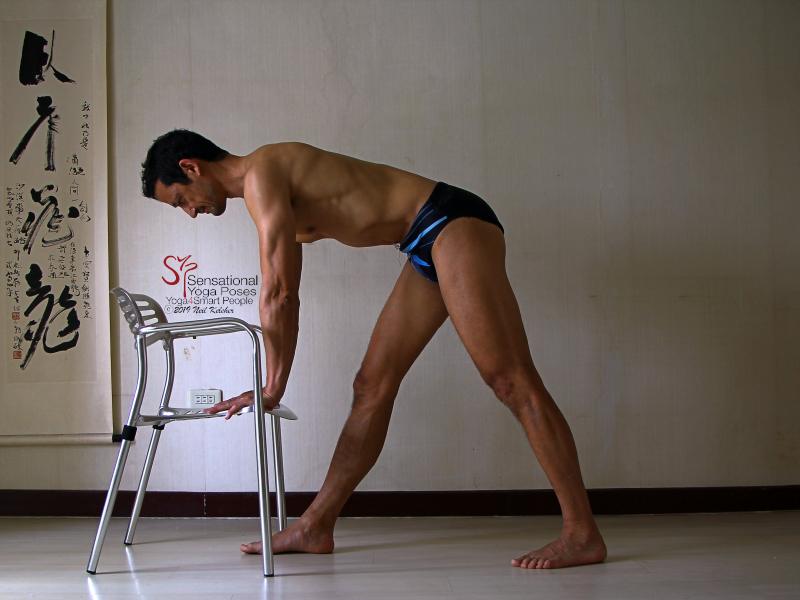
Triangle forward bend
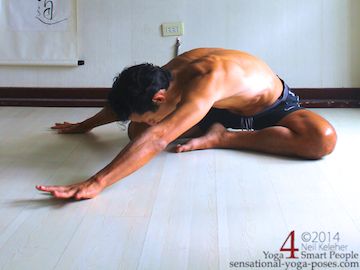
forward bending side bend seated
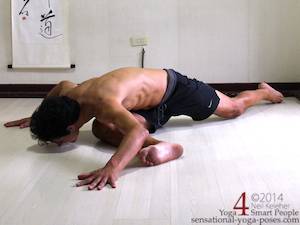
Pigeon pose variation
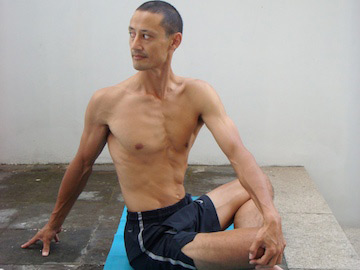
Cross legged twist using the arms
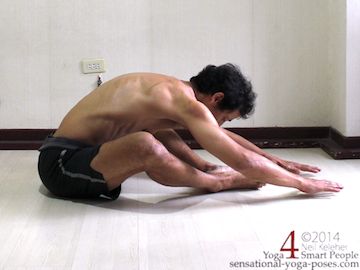
Bound angle pose with legs wide
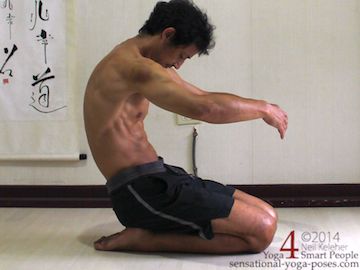
Bent back kneeling position

Bharadvajasana
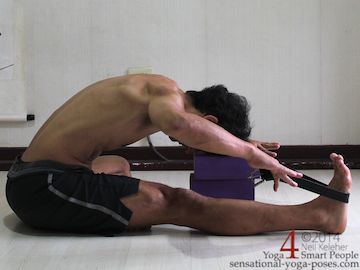
augmented seated forward bend
If have low back pain, you may actually be suffering from weak or imbalanced or ill functioning hip or leg muscles. So if you have chronic low back pain, look at hip strengthening exercises and/or standing hip exercises.
You may find some of the shoulder stretches (below) also helpful for tight upper backs.
Some of the spine stretching (and strengthening) exercises in the next section may also help.
The spine is meant to be flexible. But it's also meant to be strong. You can stretch your spine by taking its parts through simple movement ranges as shown in these spine stretches.
One way to stretch the spine while strengthening it is to use sideways bending side stretches.

Standing side bend
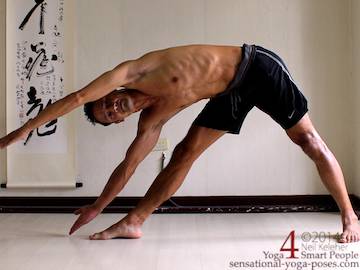
Triangle pose side stretch

Seated side stretch bent forward
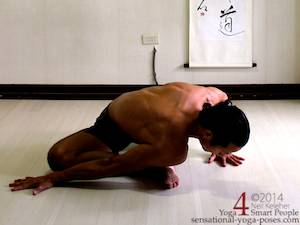
Pigeon pose with side stretch
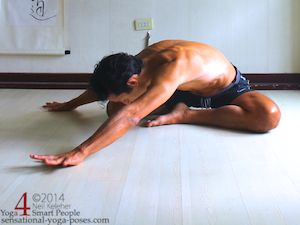
seated side stretch variation
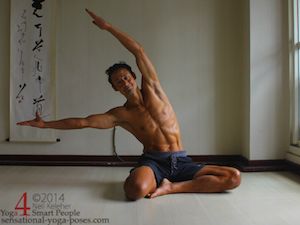
Upright seated side stretch
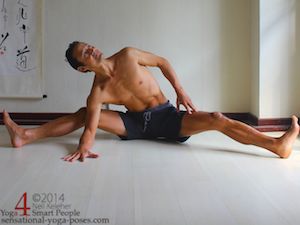
Wide leg seated side stretch
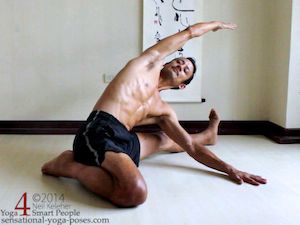
Seated side stretch variation
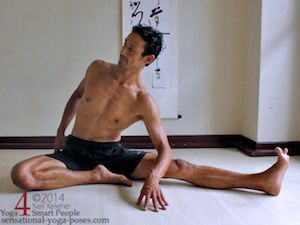
Seated side stretch variation
Another way to stretch the spine is to twist it. You can read more about that is twisting poses.
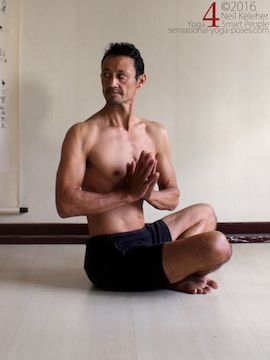
Seated twist, hands free
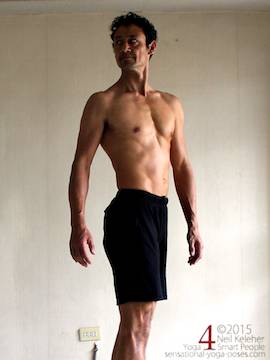
Standing upright twist
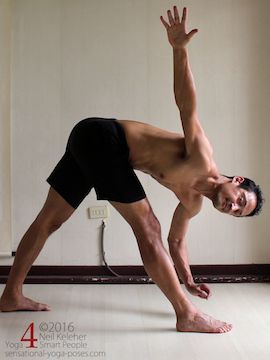
Twisting triangle pose
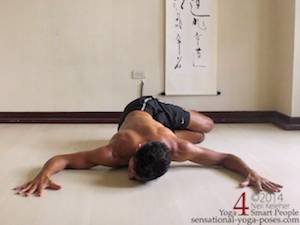
Prone twist

Shoulder stretch with a twist
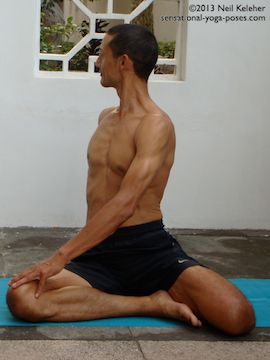
Easy seated twist
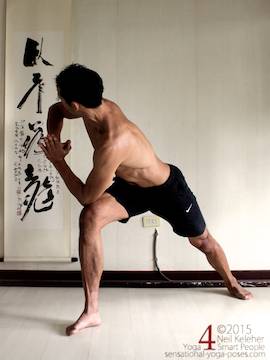
Twisting side angle

Pigeon pose twisting variation
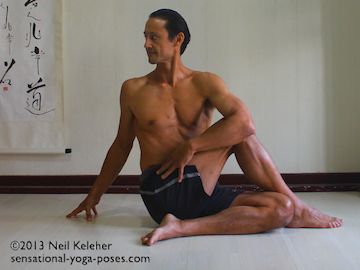
Seated closed twist

Seated open twist with a bind
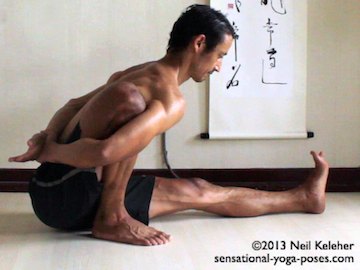
Binding pose with option for an open twist
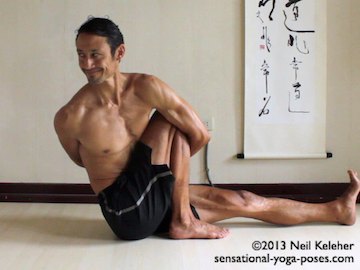
Binding pose with closed twist

Seated position with open twist

Bound lotus variation with twist
The advantage is that these can be self-balancing, i.e. they are their own counterposes (you side bend or twist to one side and then the other).
A simple tip for these spine stretches and all other stretches:
Move slowly and smoothly.
If you do that, you'll be focusing on what you are doing. You'll also be less likely to hurt yourself. And you'll be more likely to find optimal movement that then allows you to improve your flexibility.
For more on stretching the spine check, including the front and back of the spine in isolation as well as in combination with the hips and/or shoulders, check out the meridian stretches in the next section.
One way to improve shoulder flexibility is to focus on your shoulder blades. For tips on how to use and control your shoulder blades read Shoulder flexibility stretches.
If you've got tight shoulders these active shoulder stretches may be useful.
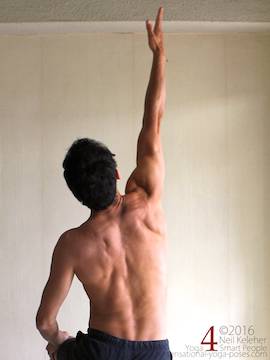
Arm overhead reaching one arm up
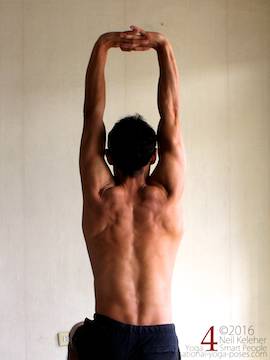
Arm overhead hands clasped, palms press up
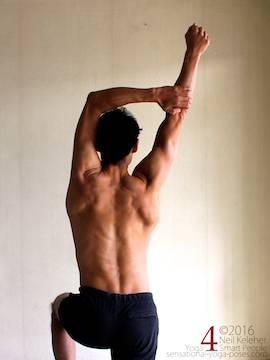
Arm overhead pulling straight arm outwards
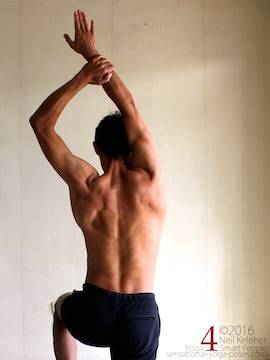
Arm overhead pulling straight arm inwards
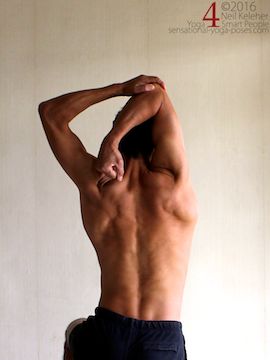
Arm overhead, pulling bent elbow inwards
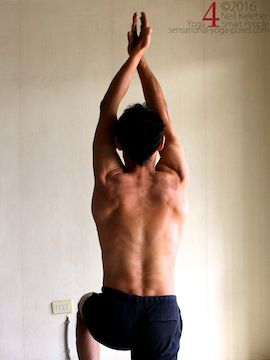
Arm overhead pulling hands apart
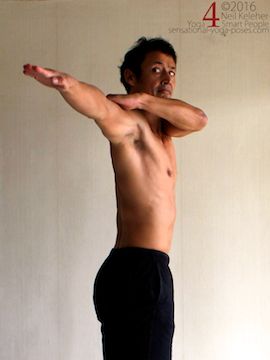
Using straight arm, pull other hand back
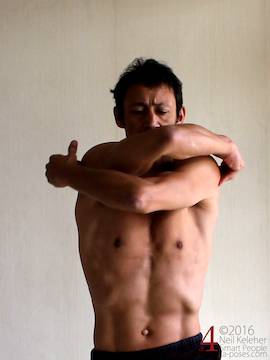
For outer shoulders, hug self
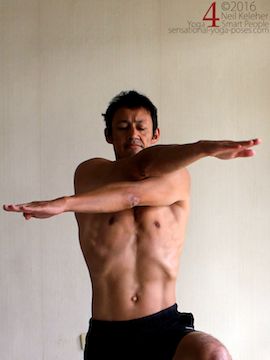
Active arm cross in front of chest
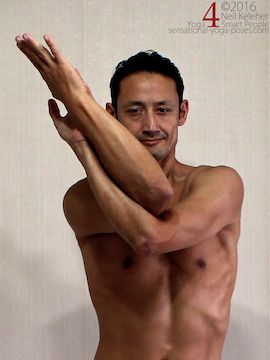
Eagle pose for arms side tilt
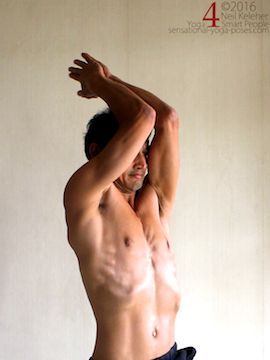
Arm overhead bent elbows press inwards
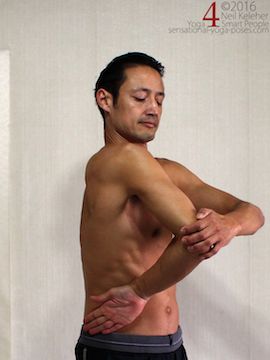
One arm penguin stretch
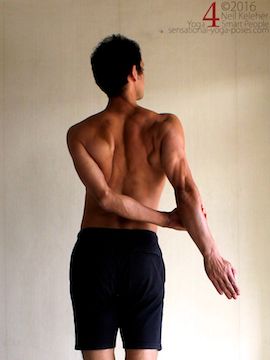
Pulling straight arm outwards behind back
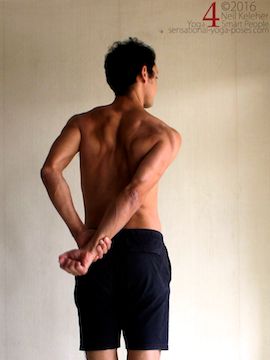
Pulling straight arm inwards behind back

Pull hand to opposite waist behind back
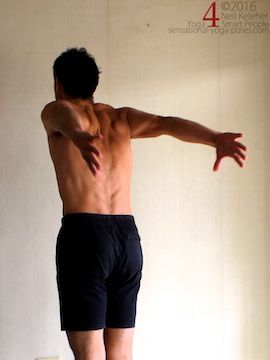
Arms back and up, unclasped
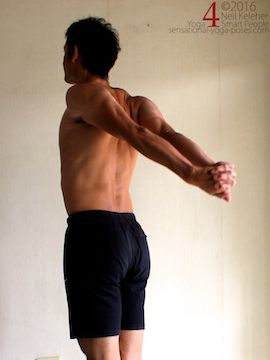
Arms back and up, clasped
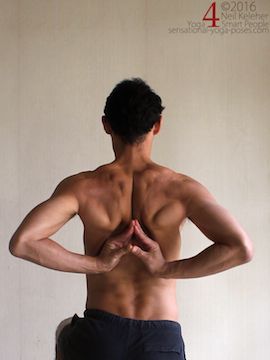
Reverse prayer
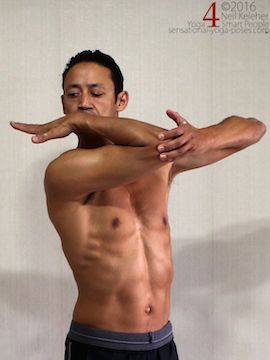
High penguin one arm stretch
The muscle assisted shoulder stretches above are if you want to work while stretching. The gravity assisted arm stretches can be more relaxing (though you can apply muscle control in these stretches also). Both types can be used to help improve shoulder flexibility
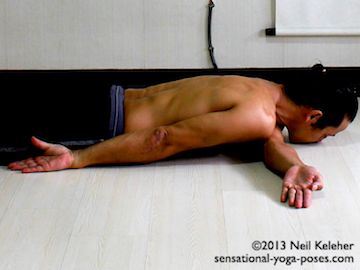
Half dragonfly arm stretch
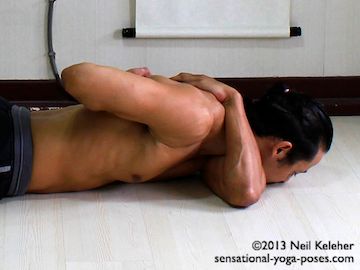
Clasped half dragonfly
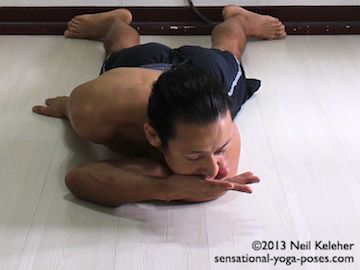
External rotation arm stretch
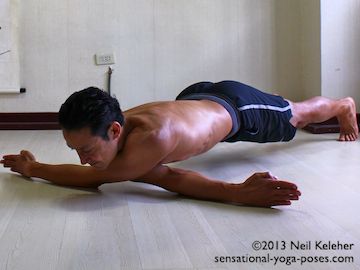
Dragonfly arm stretch
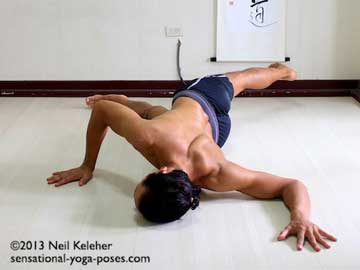
Bennitasana arm stretch
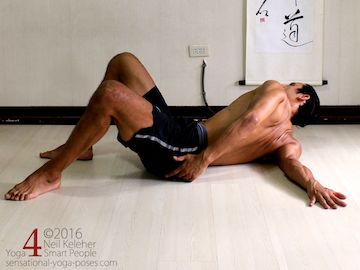
Lapasana shoulder stretch
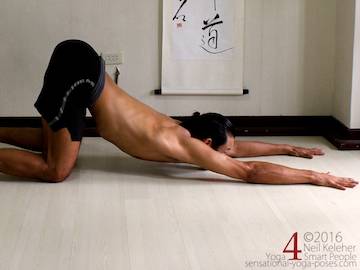
Puppy dog arm /chest stretch
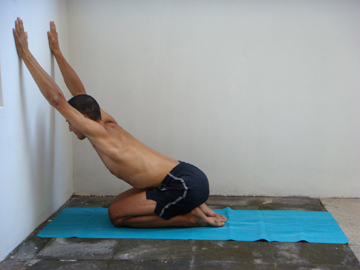
Spiderman wall stretch kneeling
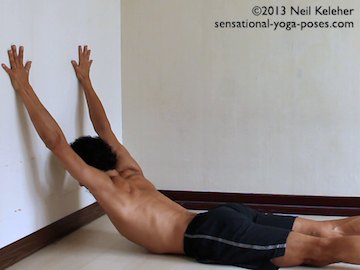
Spiderman wall stretch prone
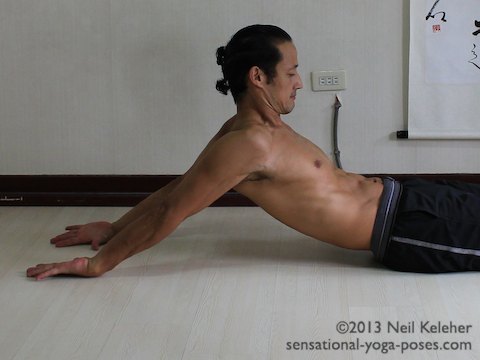
Rack arm stretch
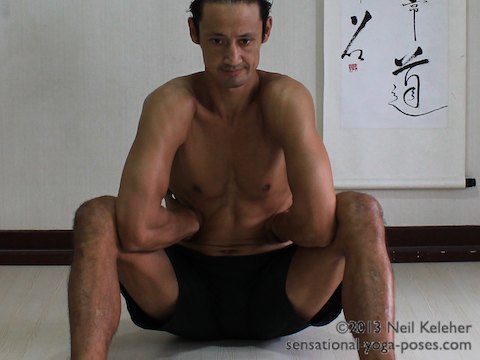
Penguin pose shoulder stretch

Pull back arm stretch
Yoga shoulder stretches includes traditional yoga shoulder stretching positions like reverse prayer, eagle pose and the shoulder stretch used in prasarita padottanasana C.
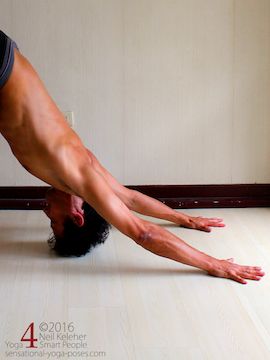
Downward dog shoulder strech
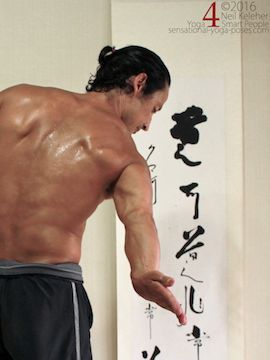
Internal arm rotation while reaching back
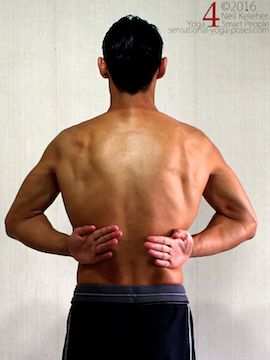
Reverse prayer

Arms back and up, hands clasped
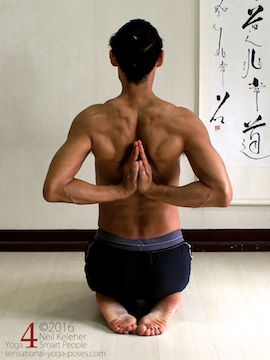
reverse prayer
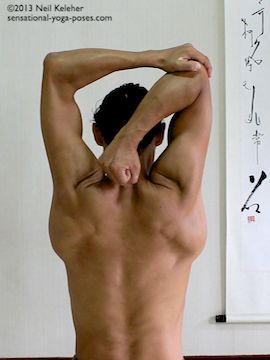
Overhead tricep stretch
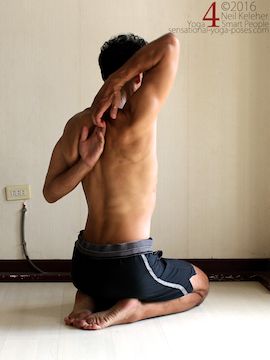
Cow face pose arms

Eagle pose arms
Hip and Shoulder Stretches are poses which stretch the hips and shoulders at the same time.
Meridian stretches are stretches which are designed to stretch the meridians. The meridians run up and down the sides of the body, arms and legs and correspond to organs.
Because these stretches can be a good way to relax or re-energize, they've been grouped under the yoga for stress category (de-stressing).
The meridians lie within connective tissue and to stretch them the main stretching technique to use is relaxed gravity assisted stretching.
For a particularly refreshing stretching session you can use the meridians to guide the sequence in which you do your stretches. To do that, follow the "flow of the meridians".
Published: 2014 06 28
Updated: 2021 03 10
